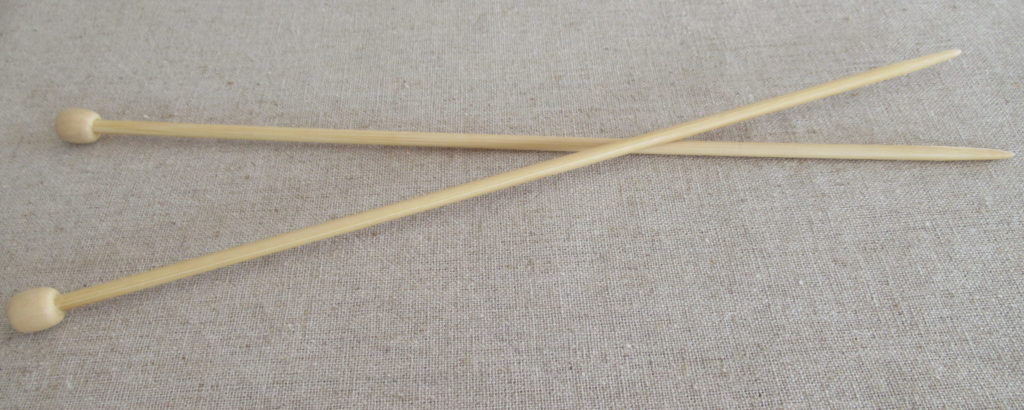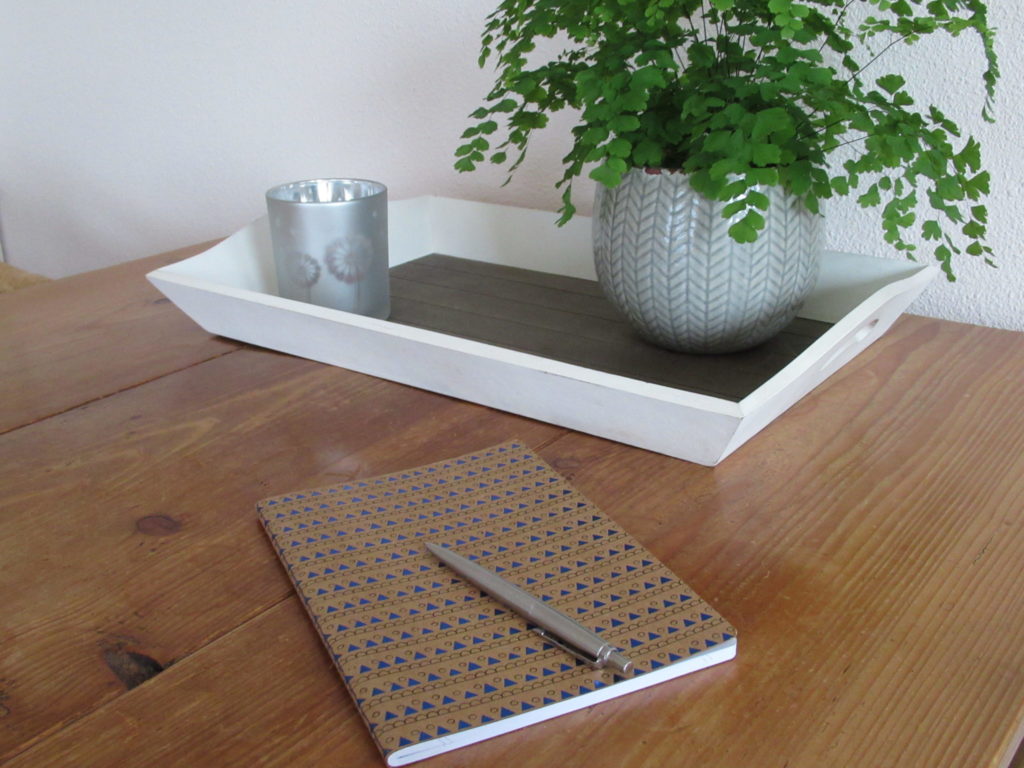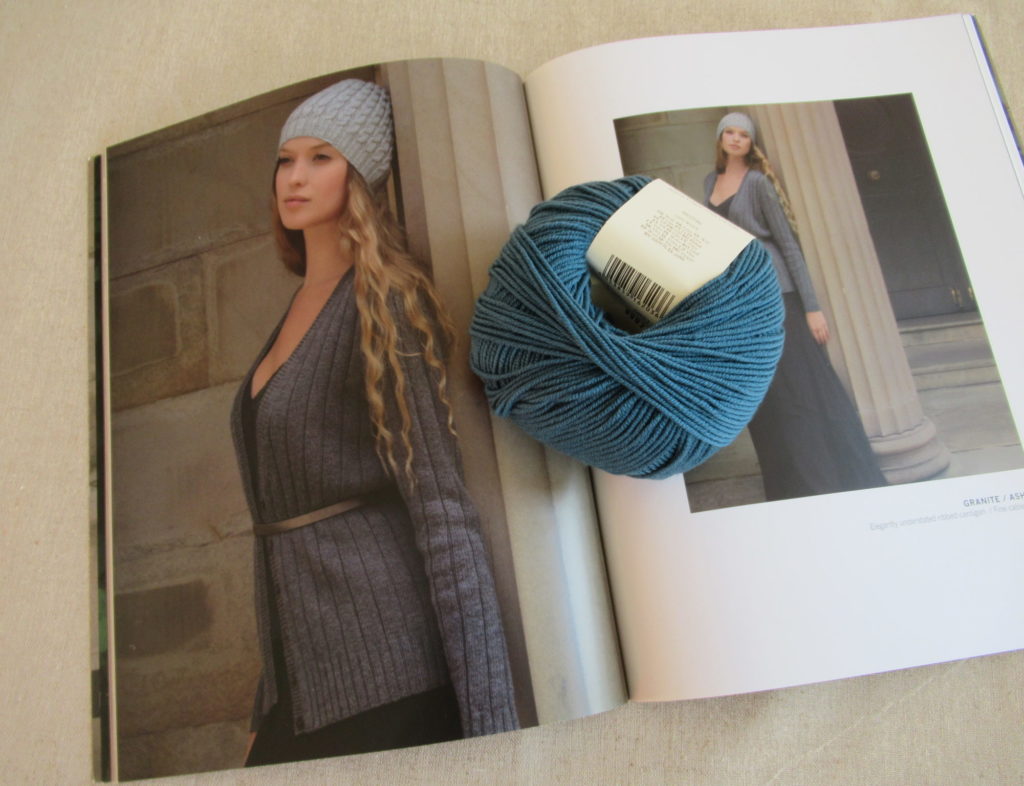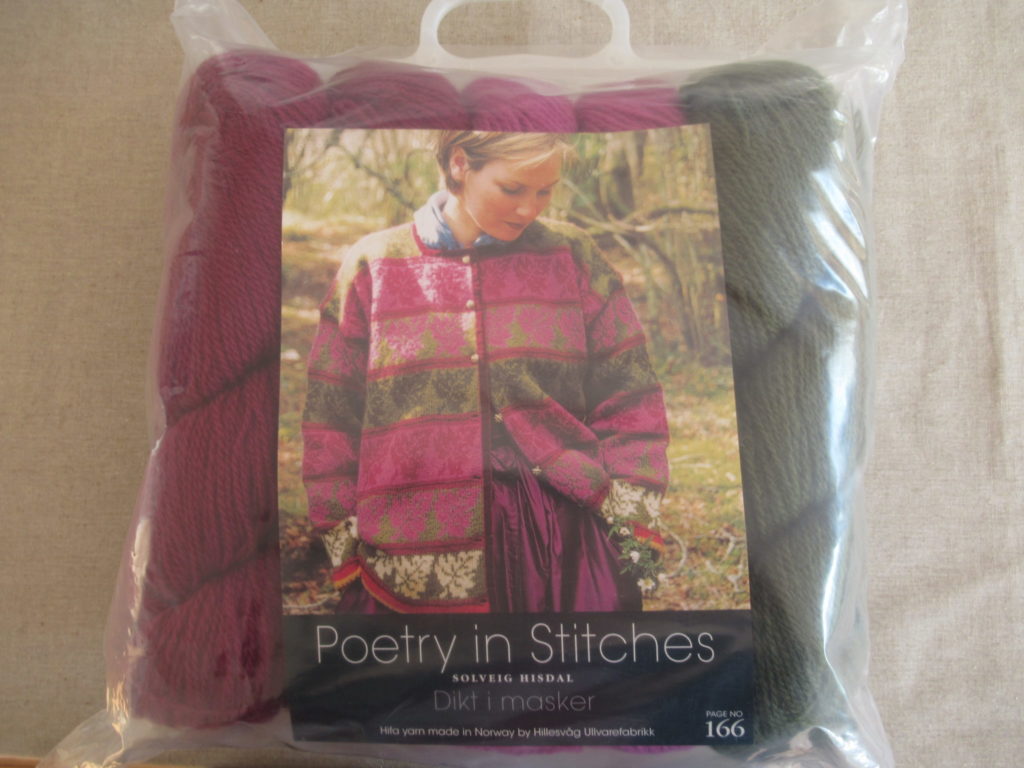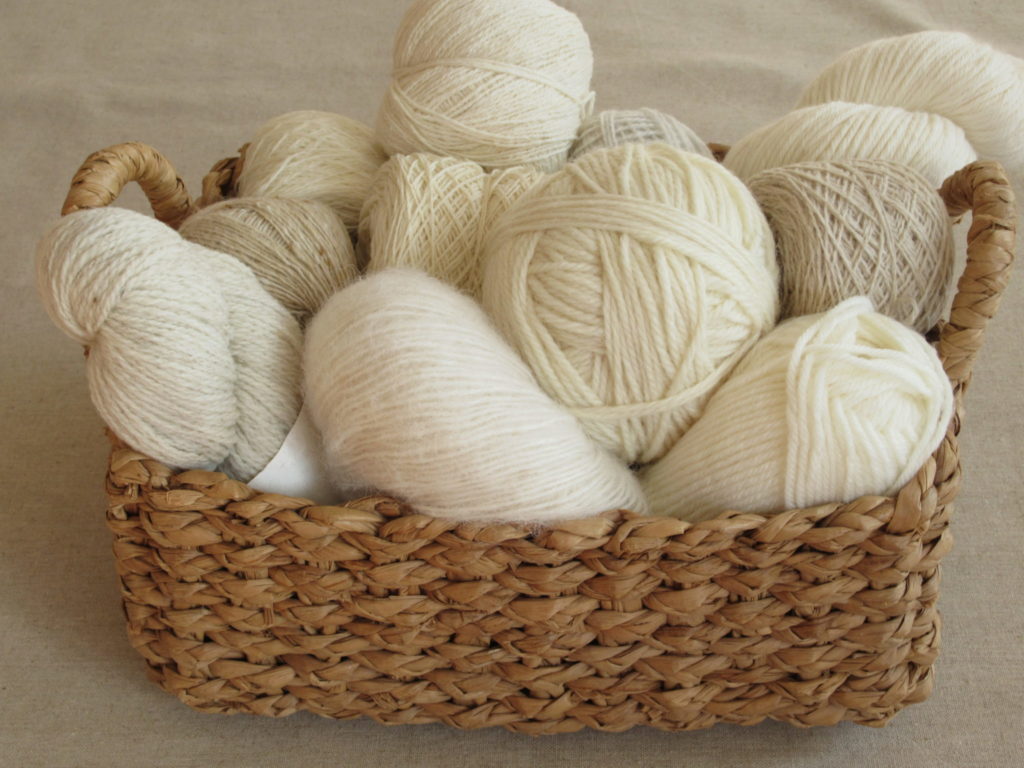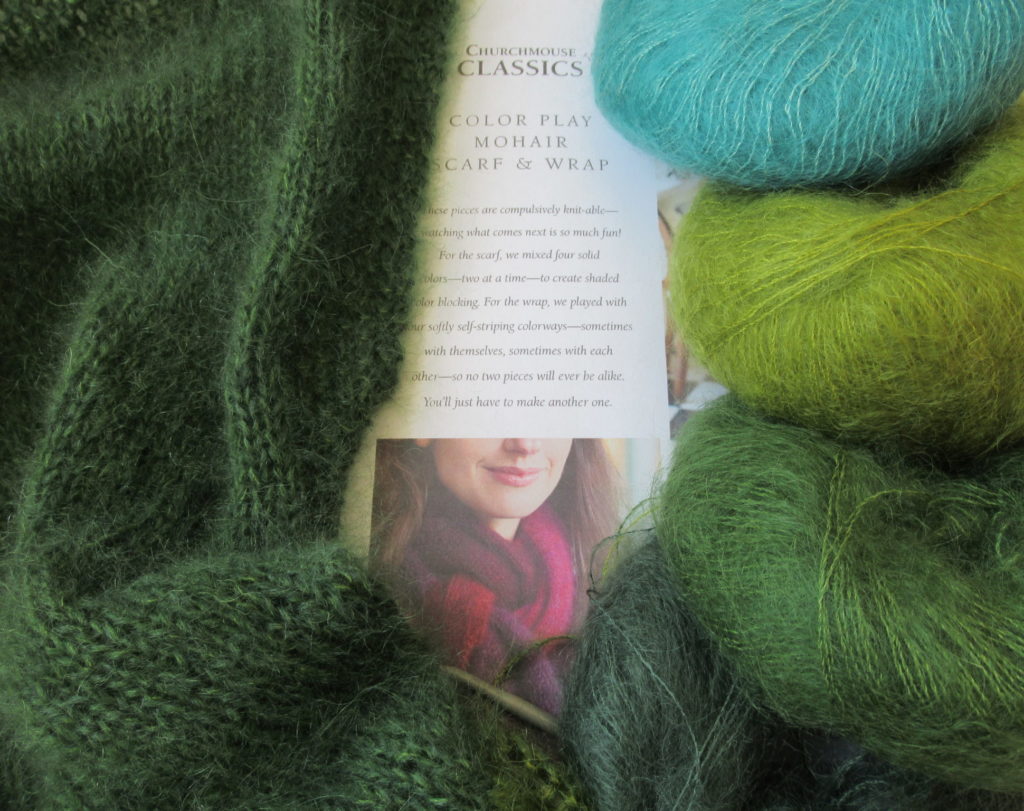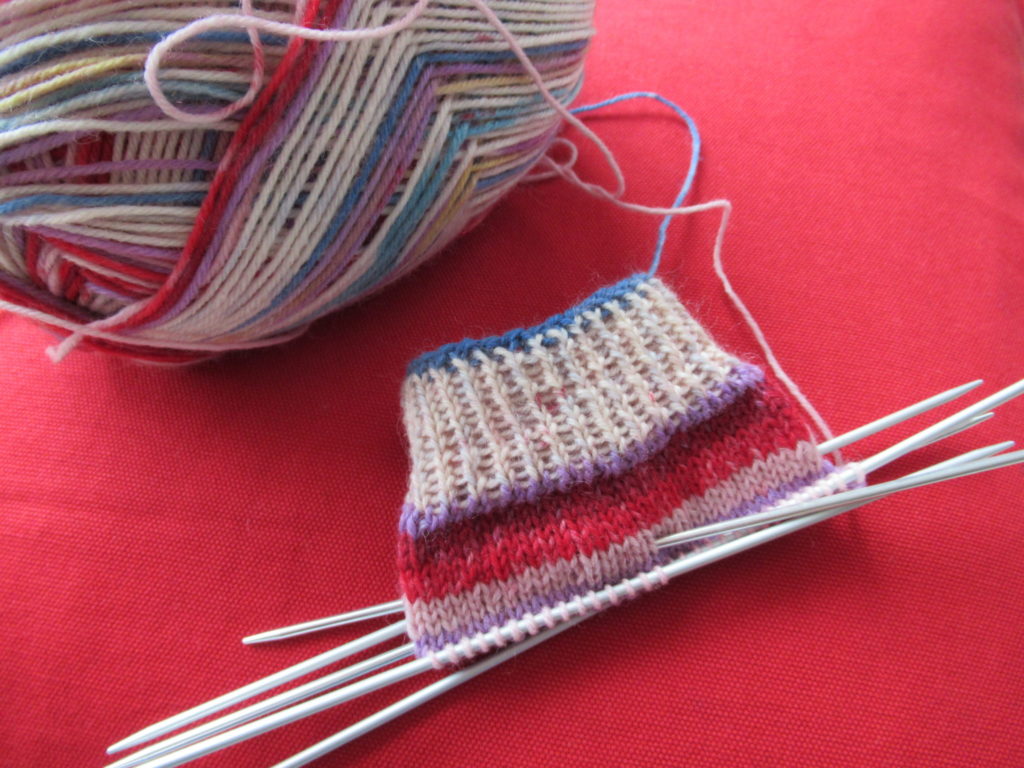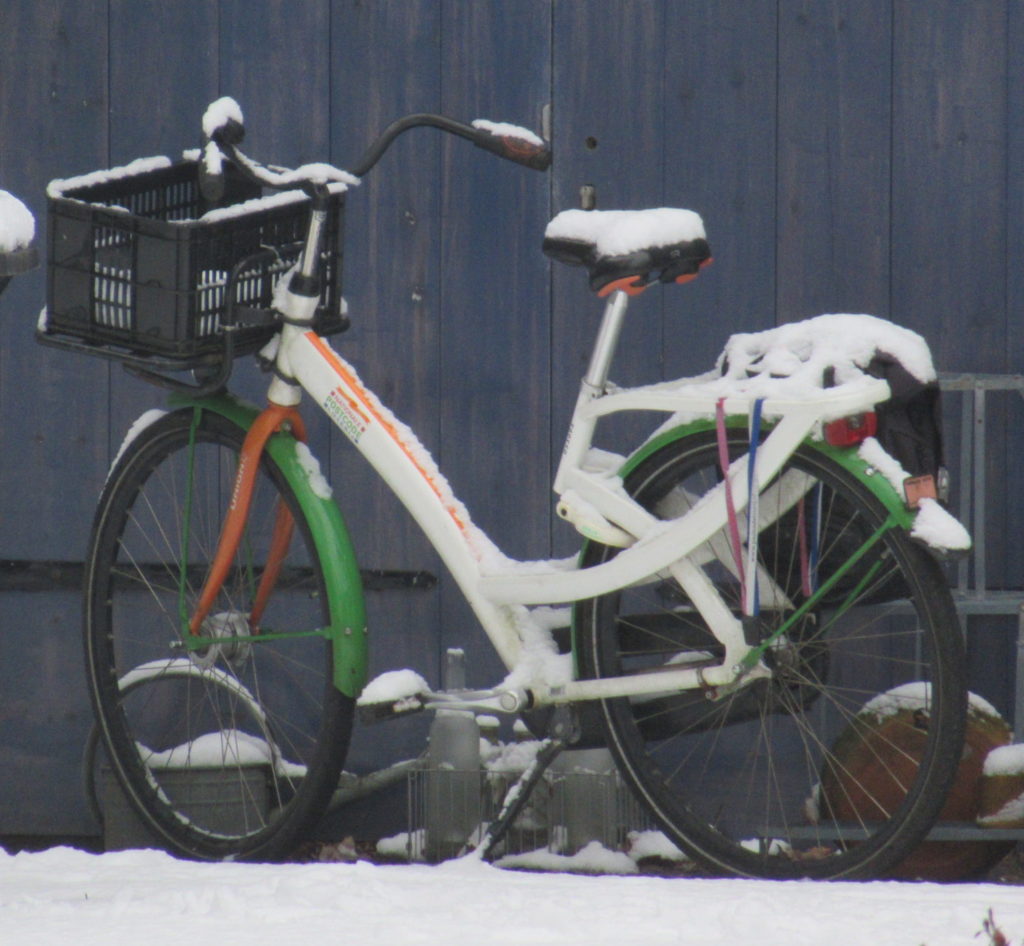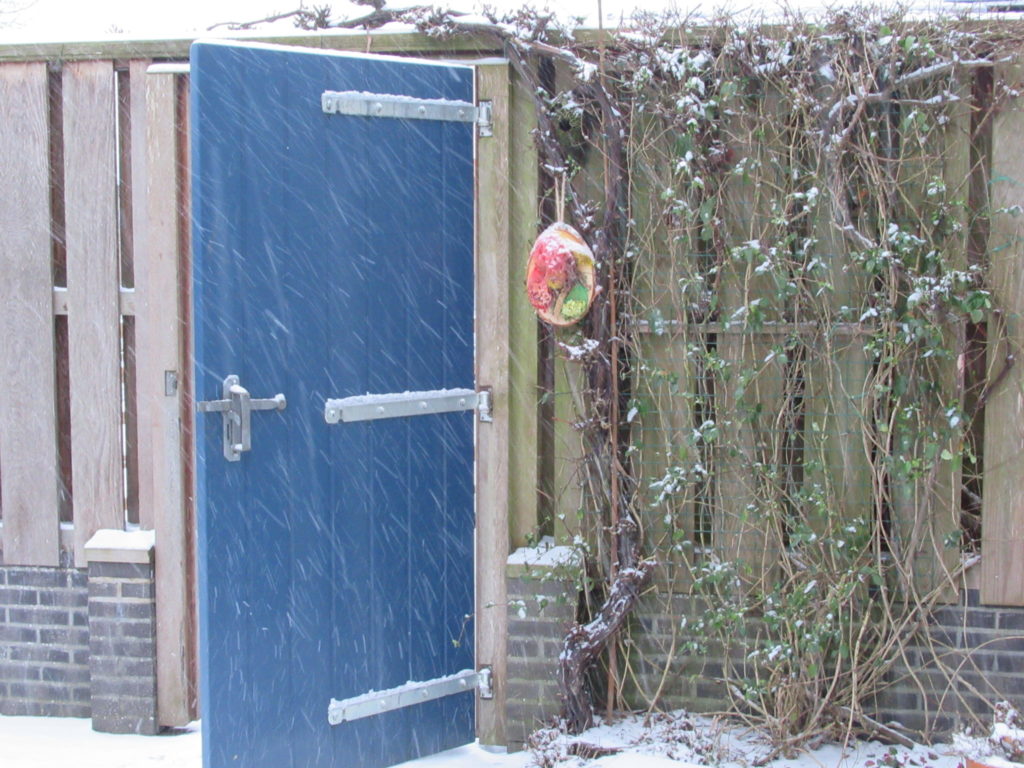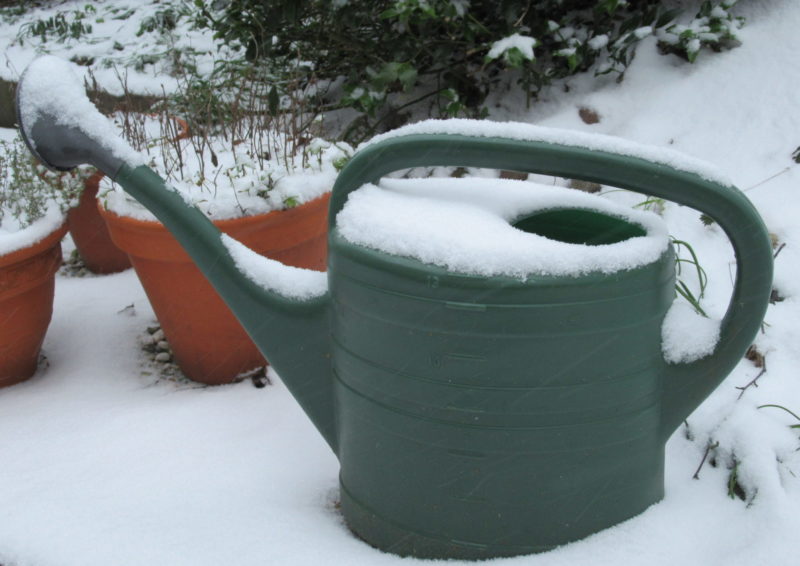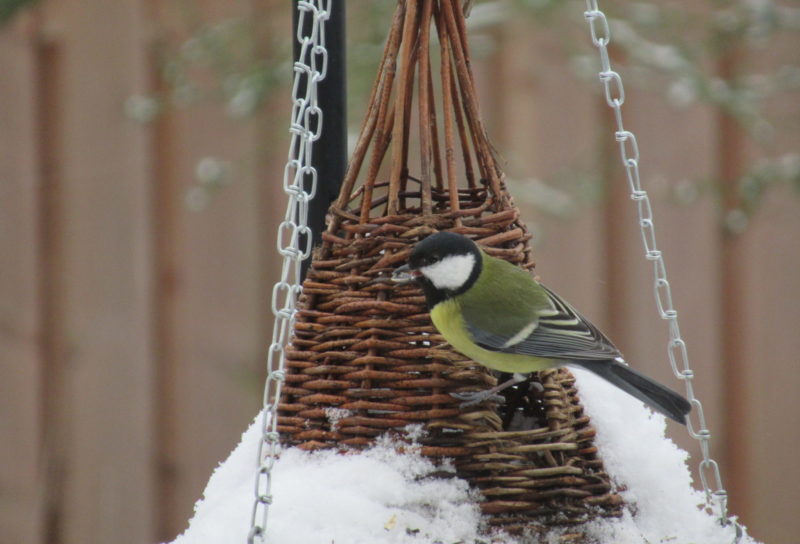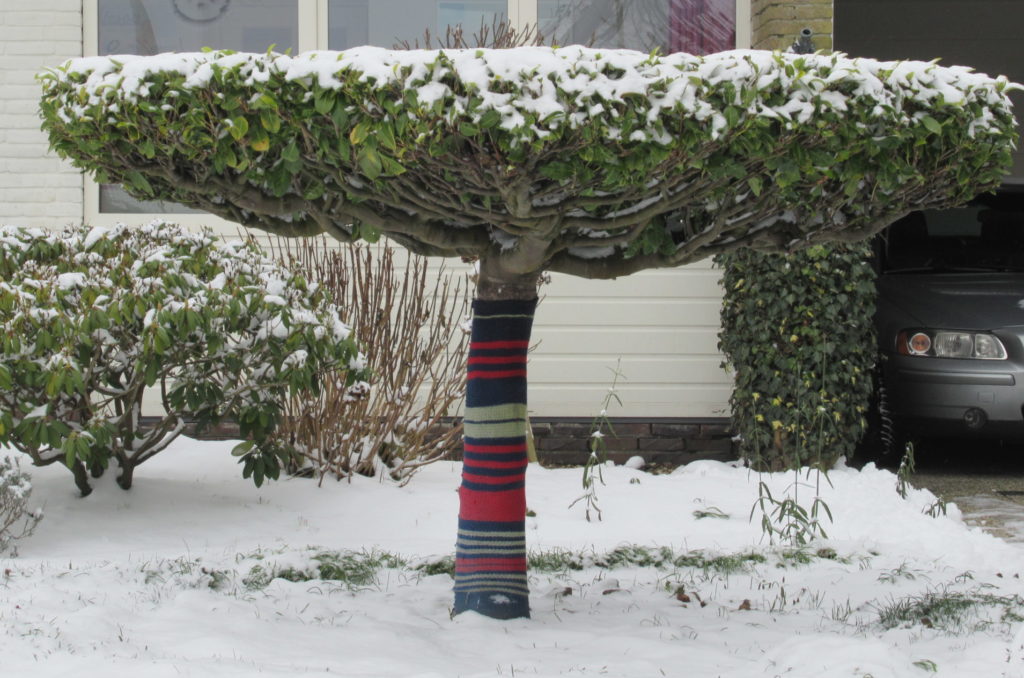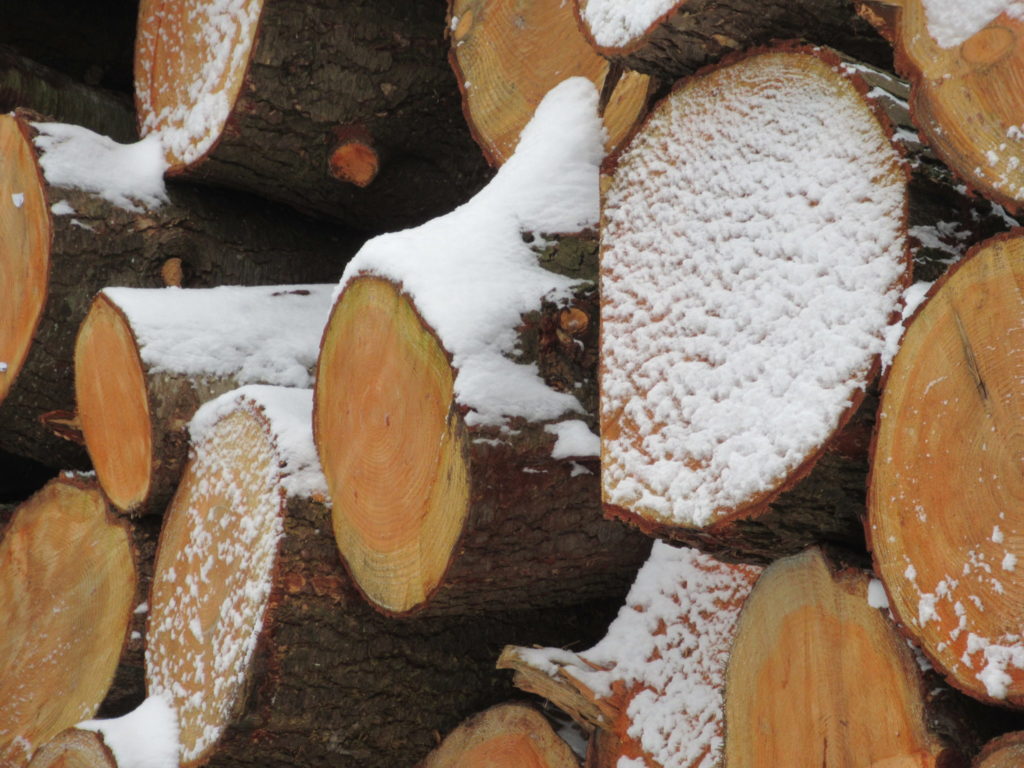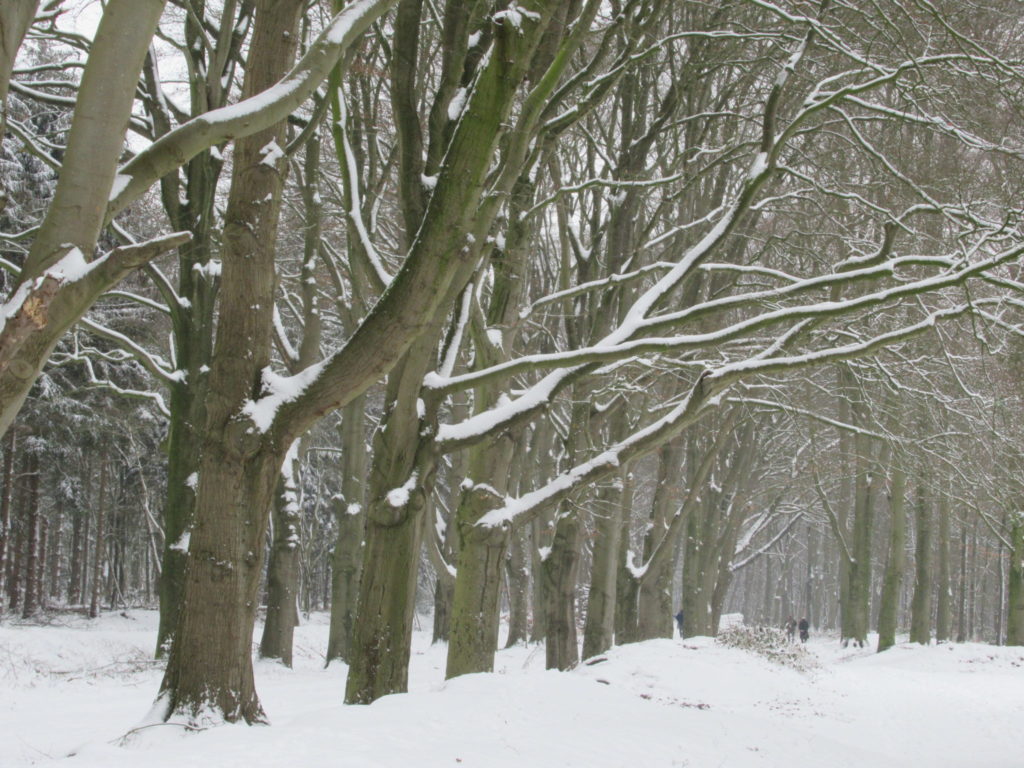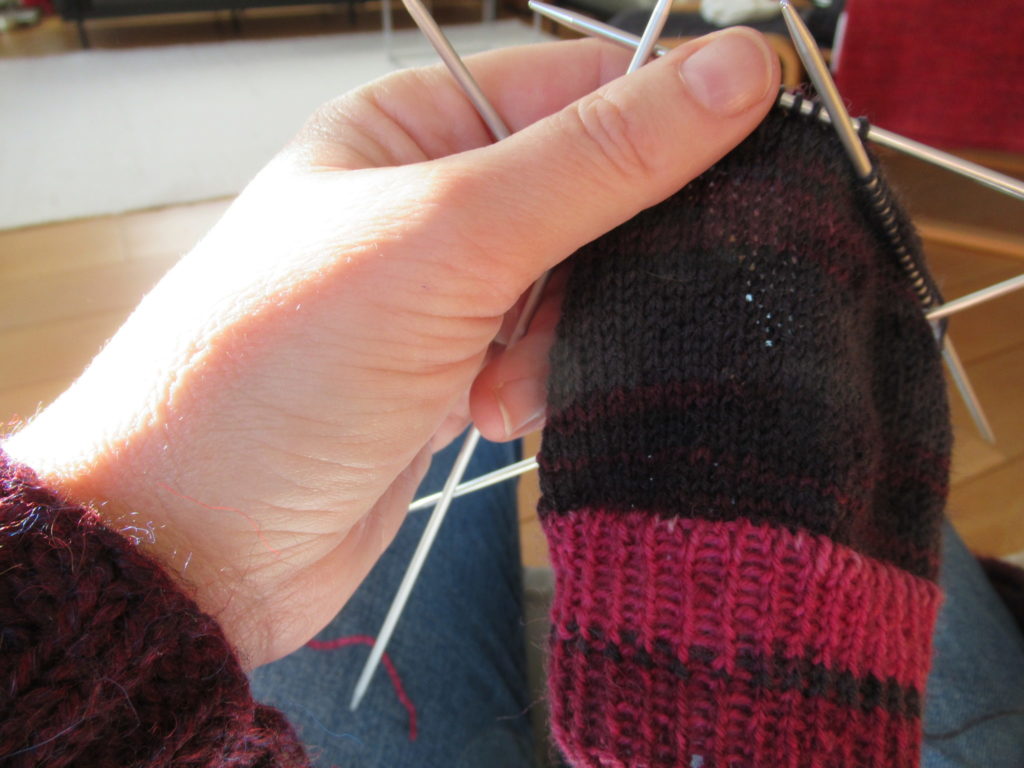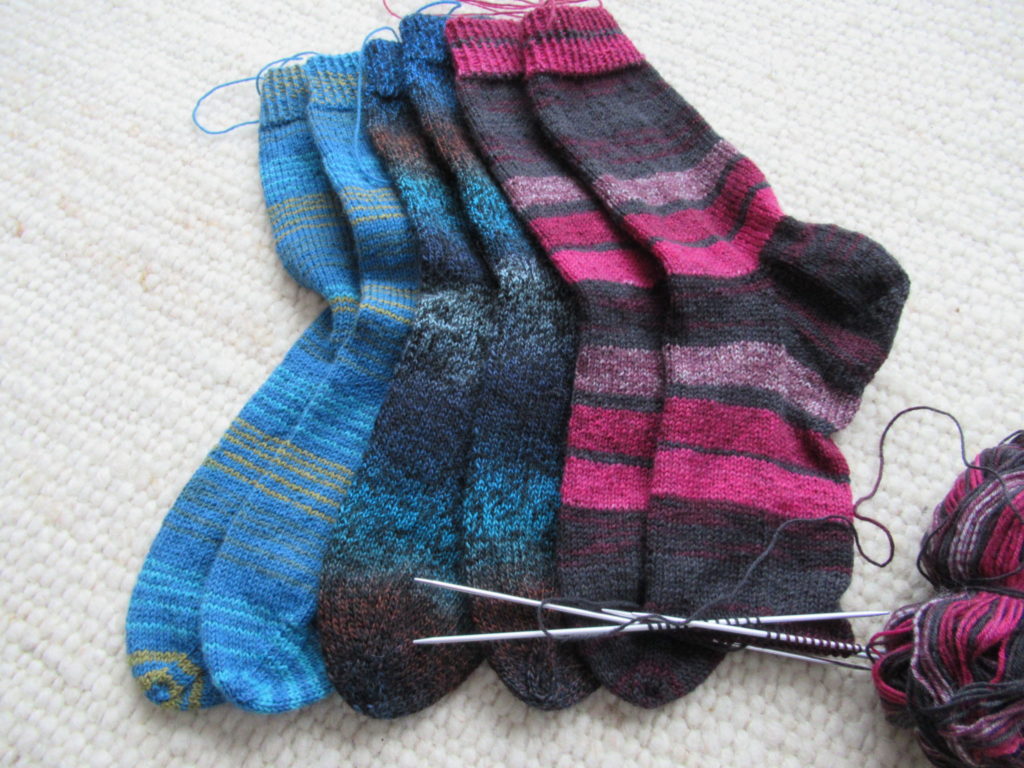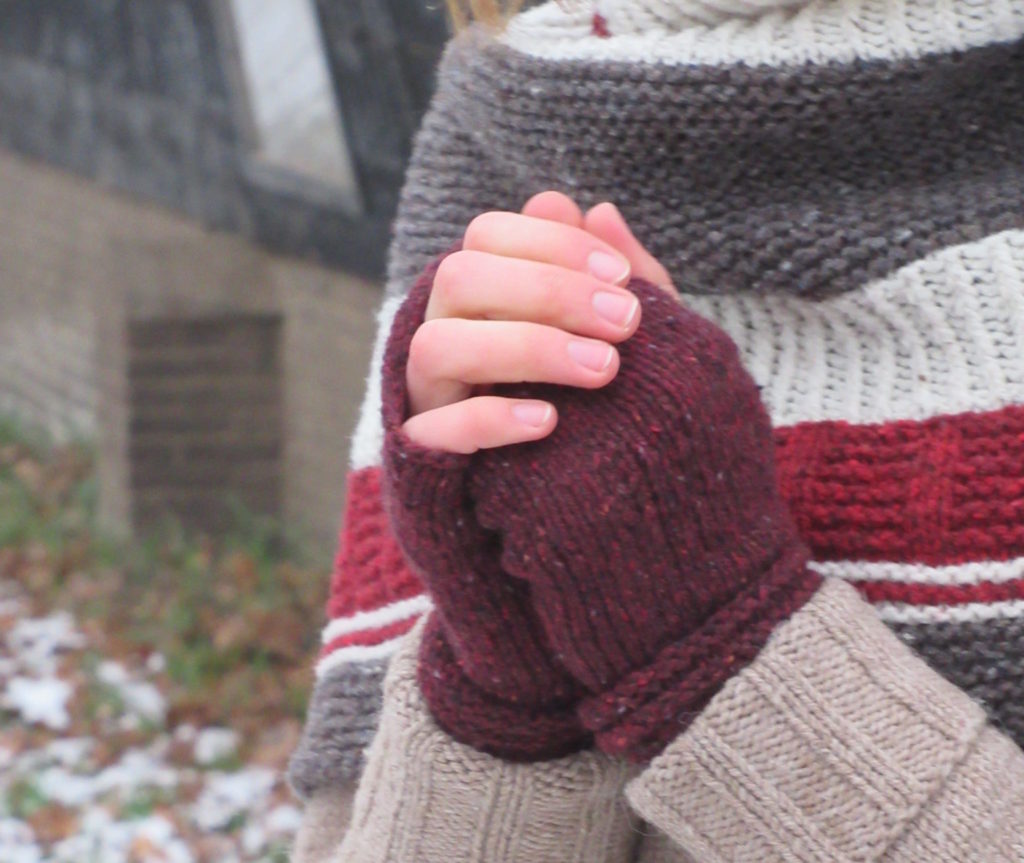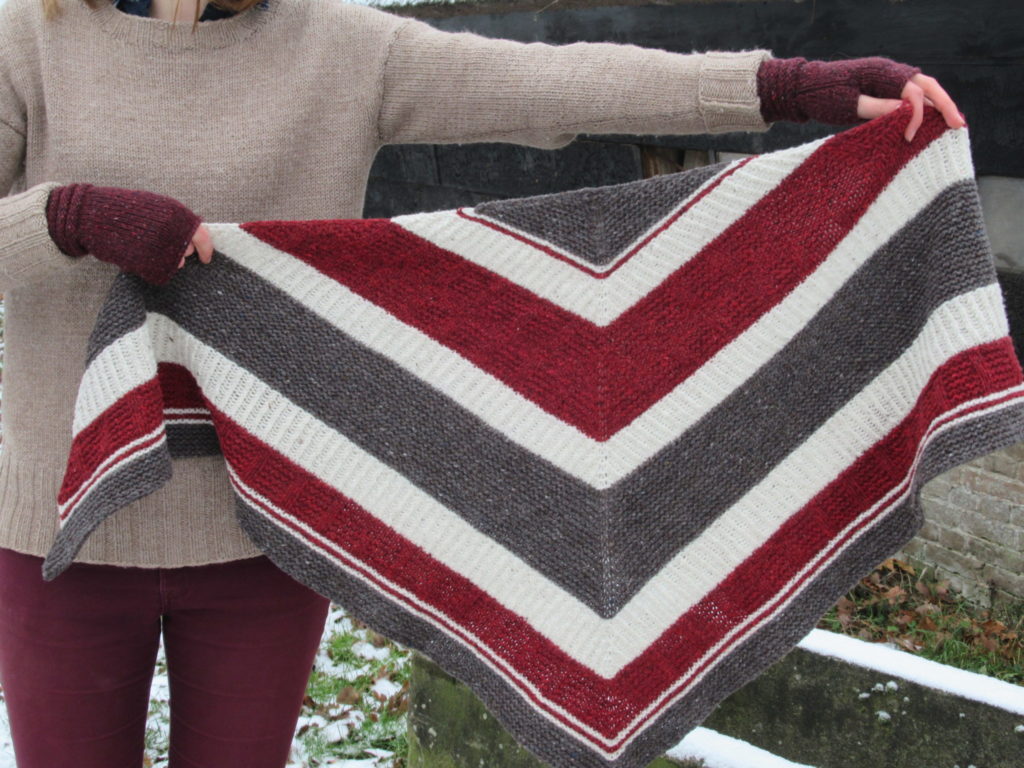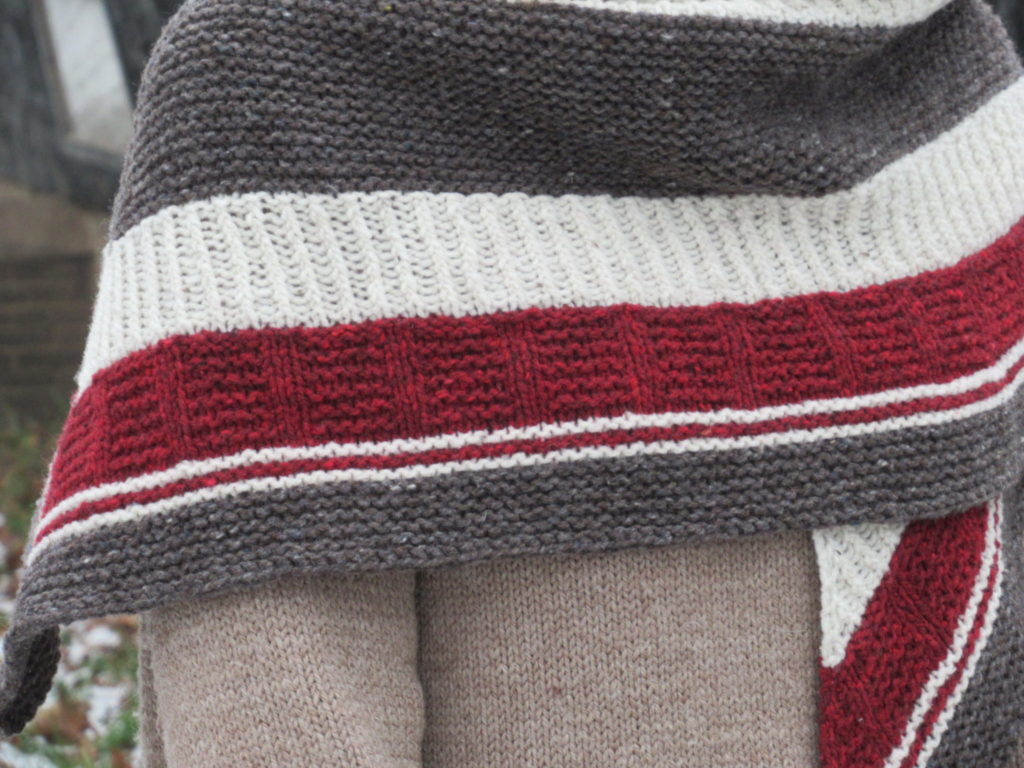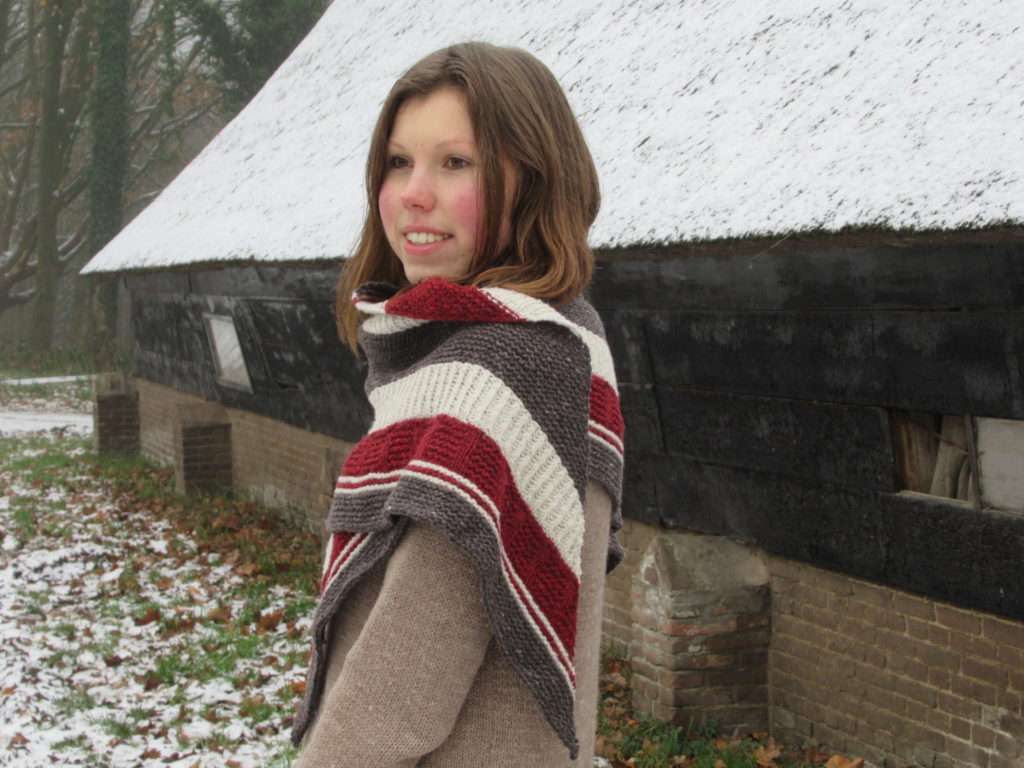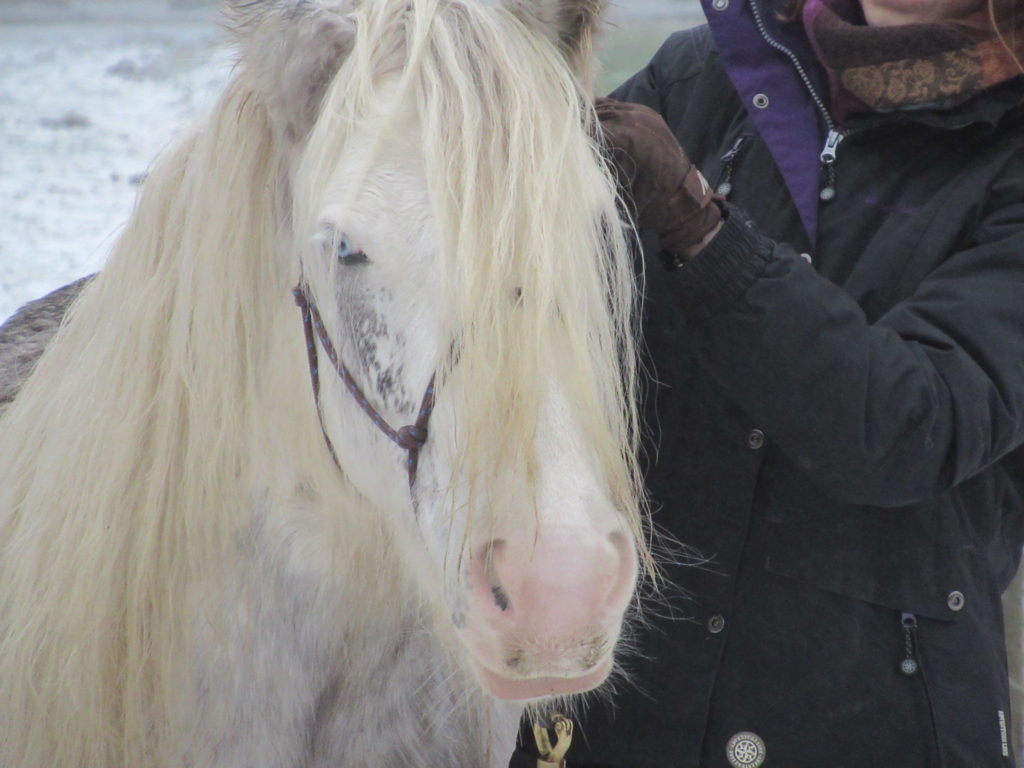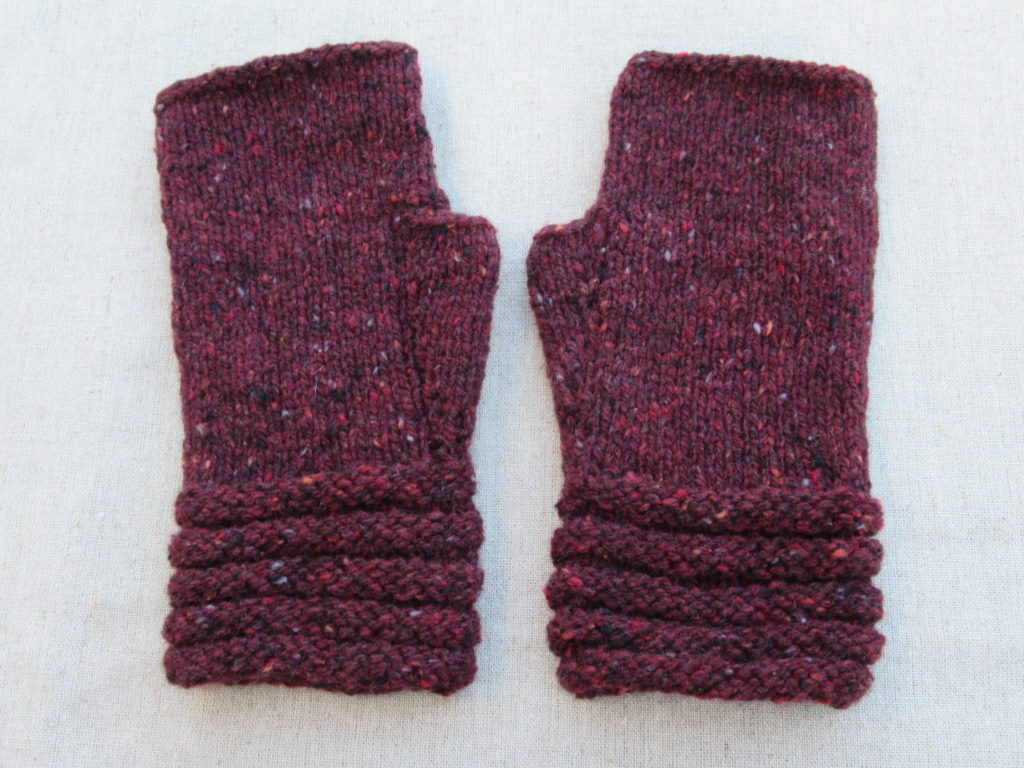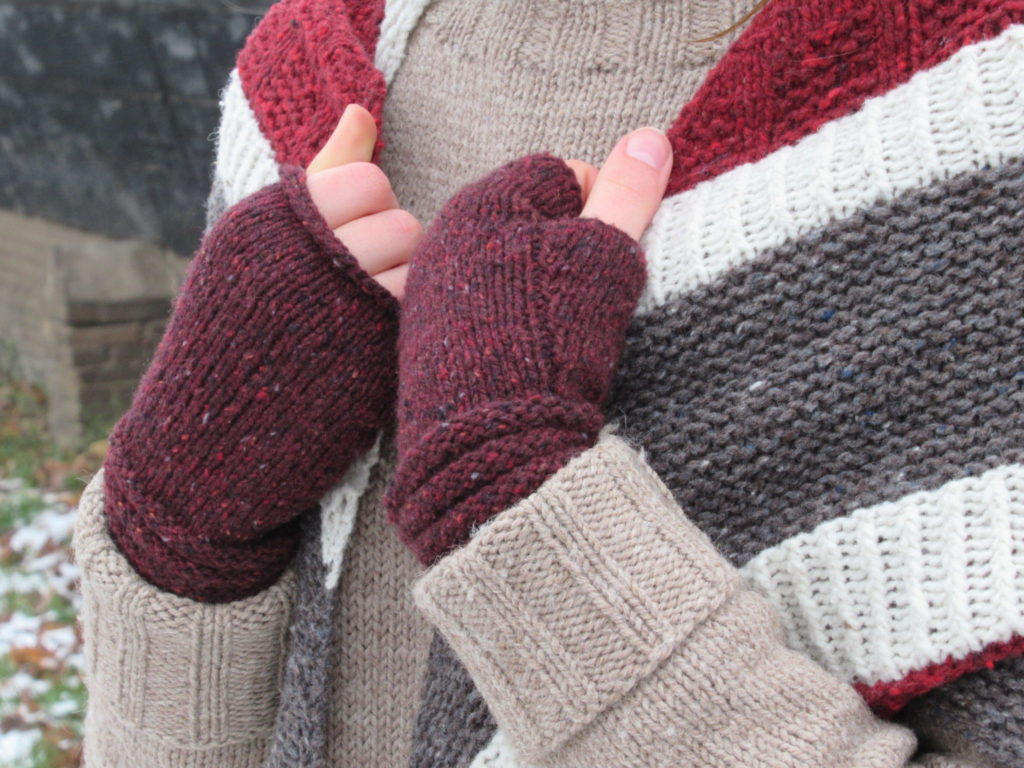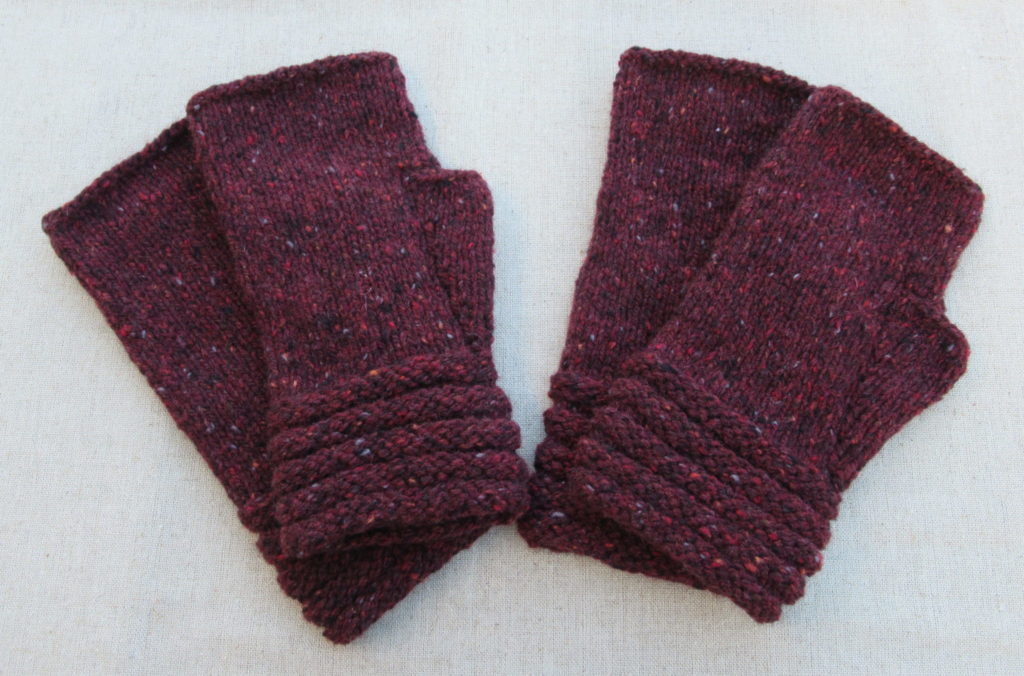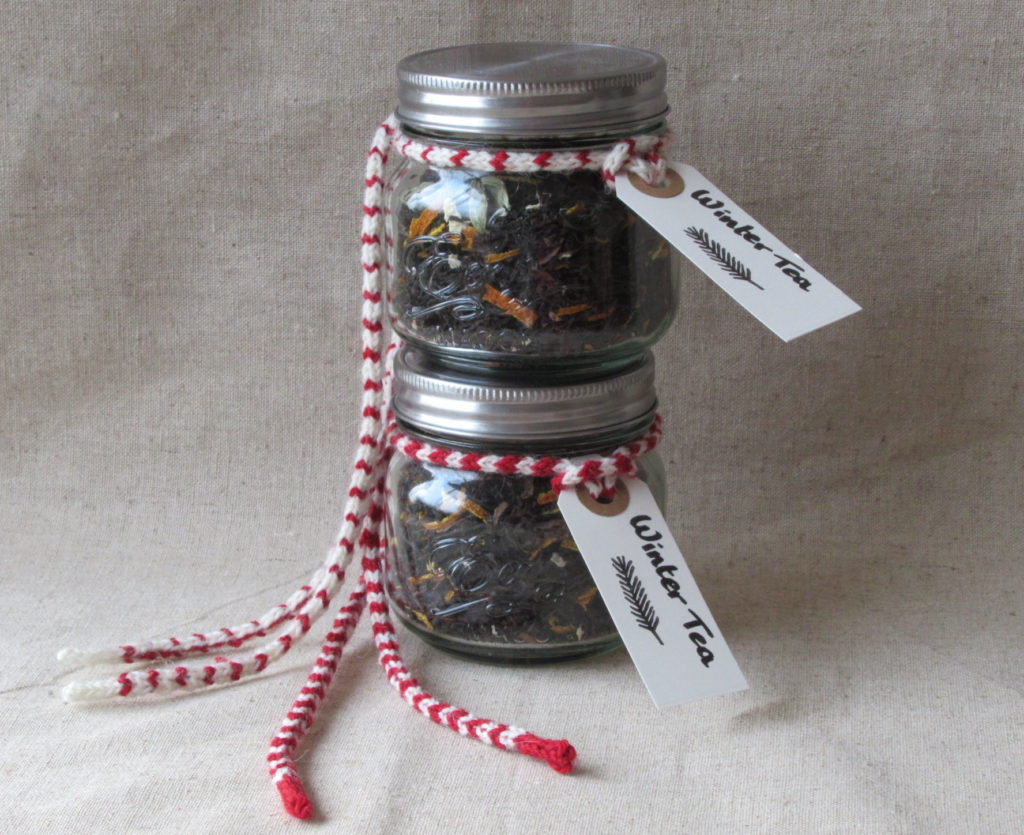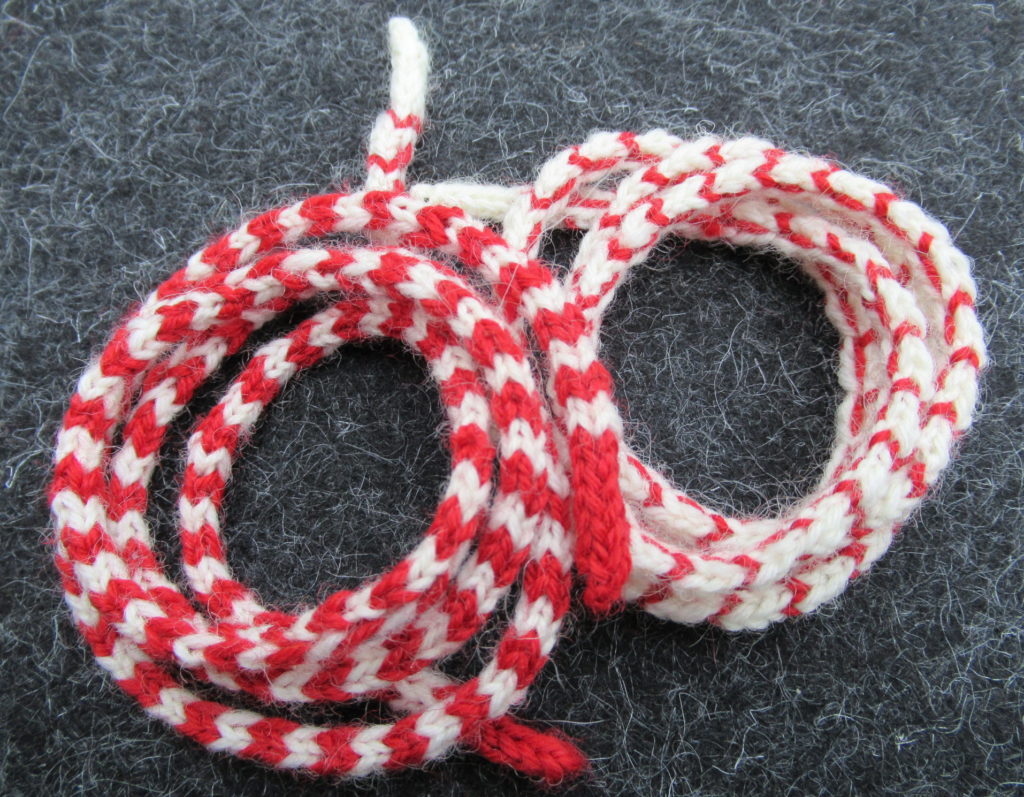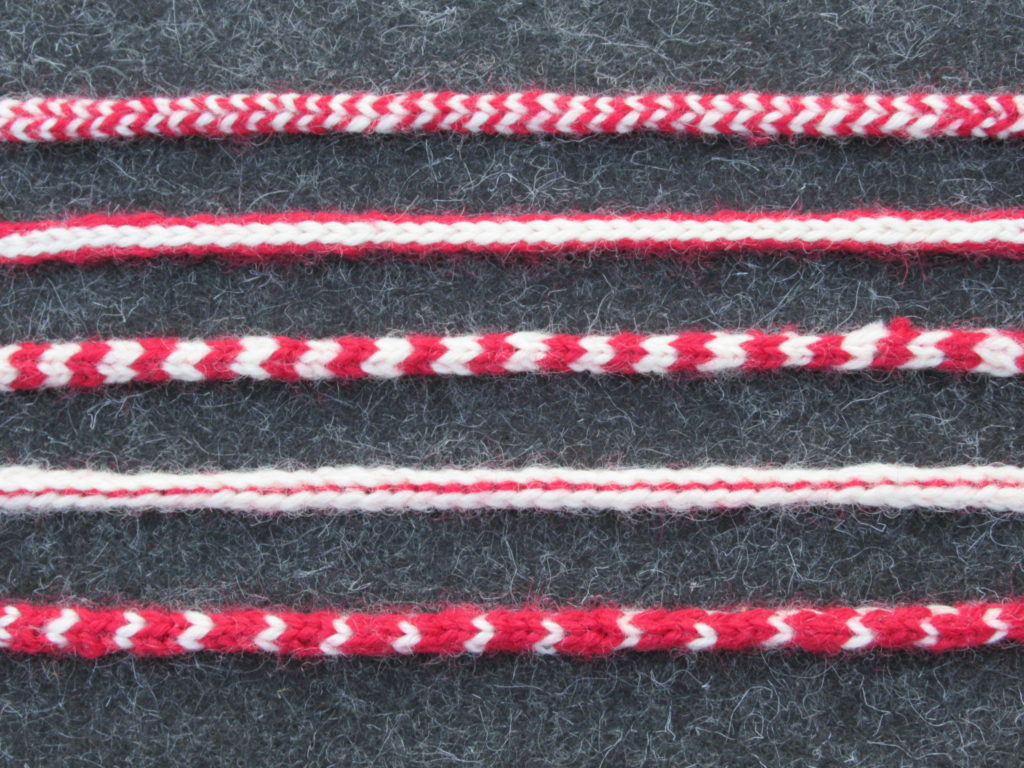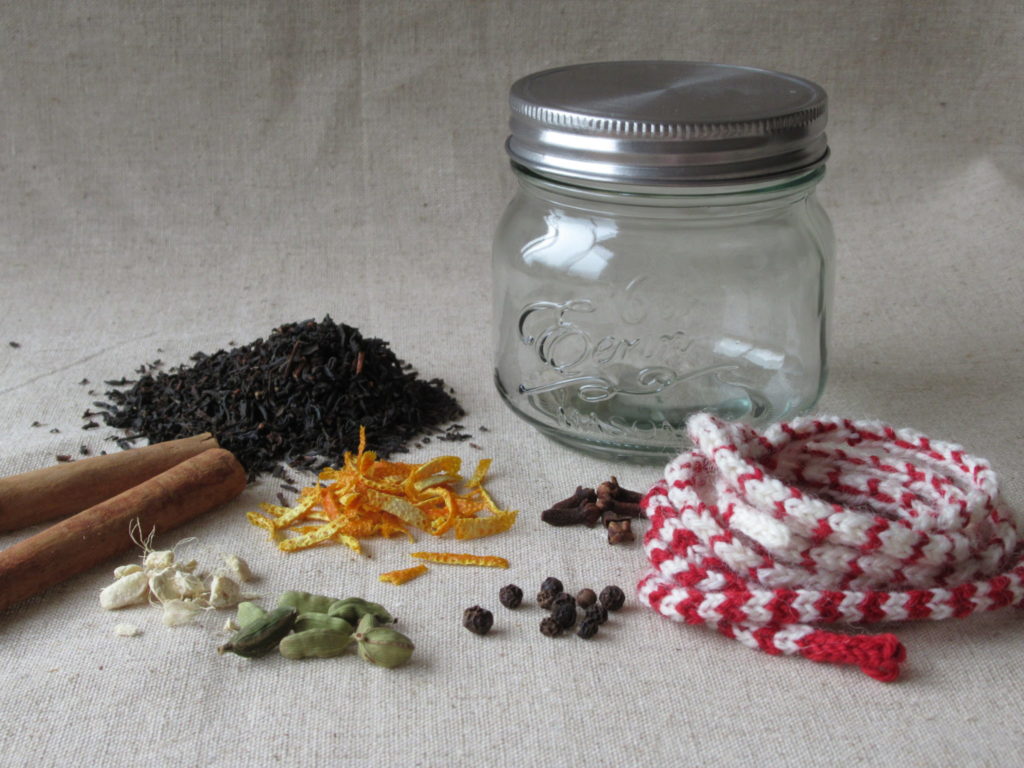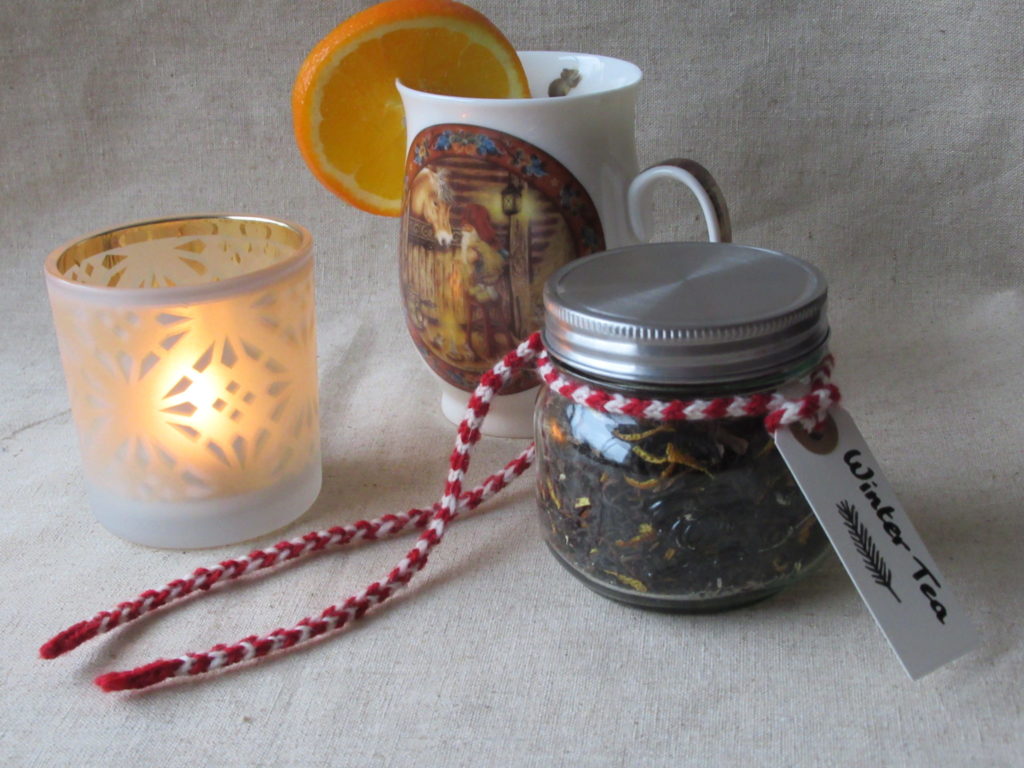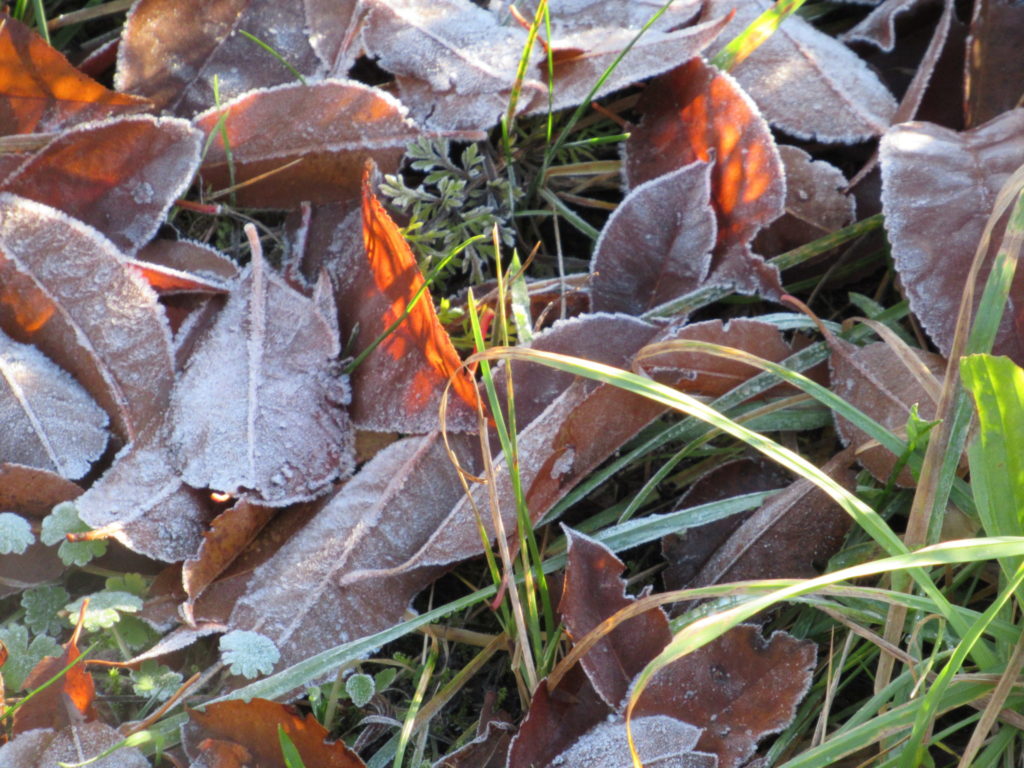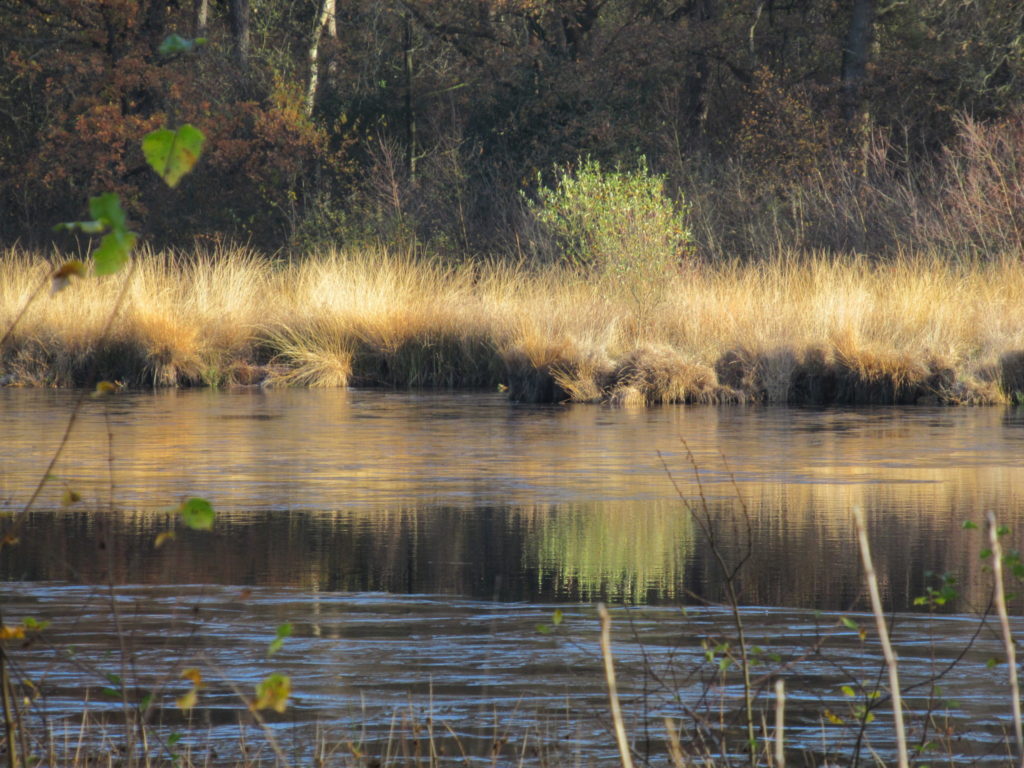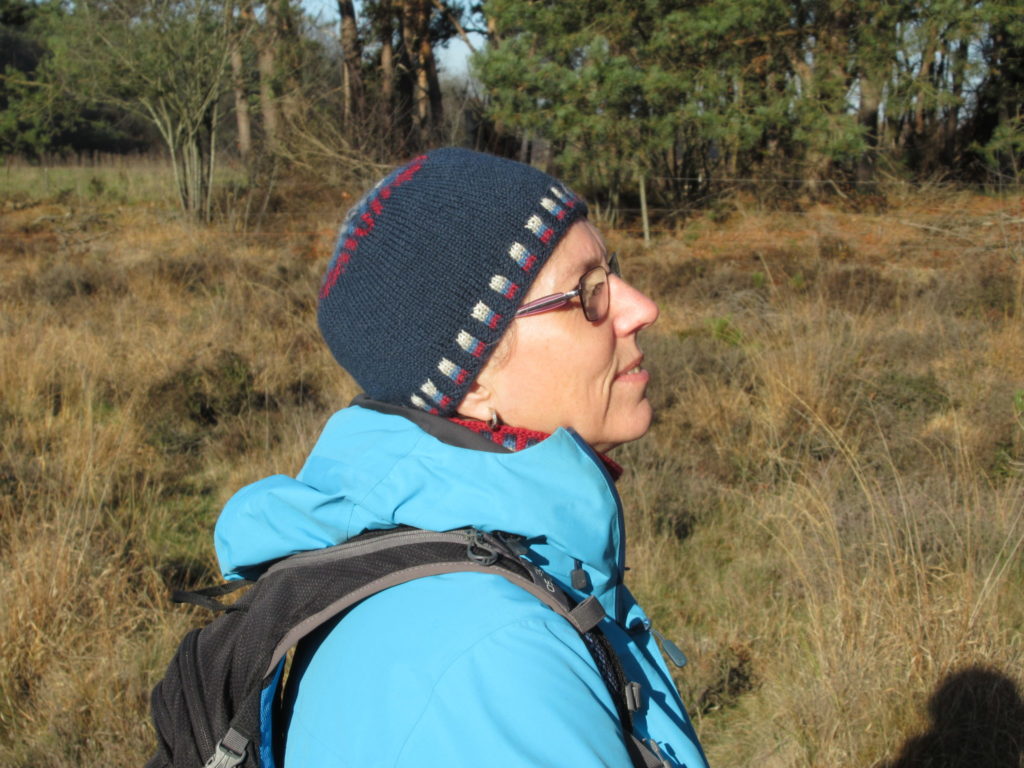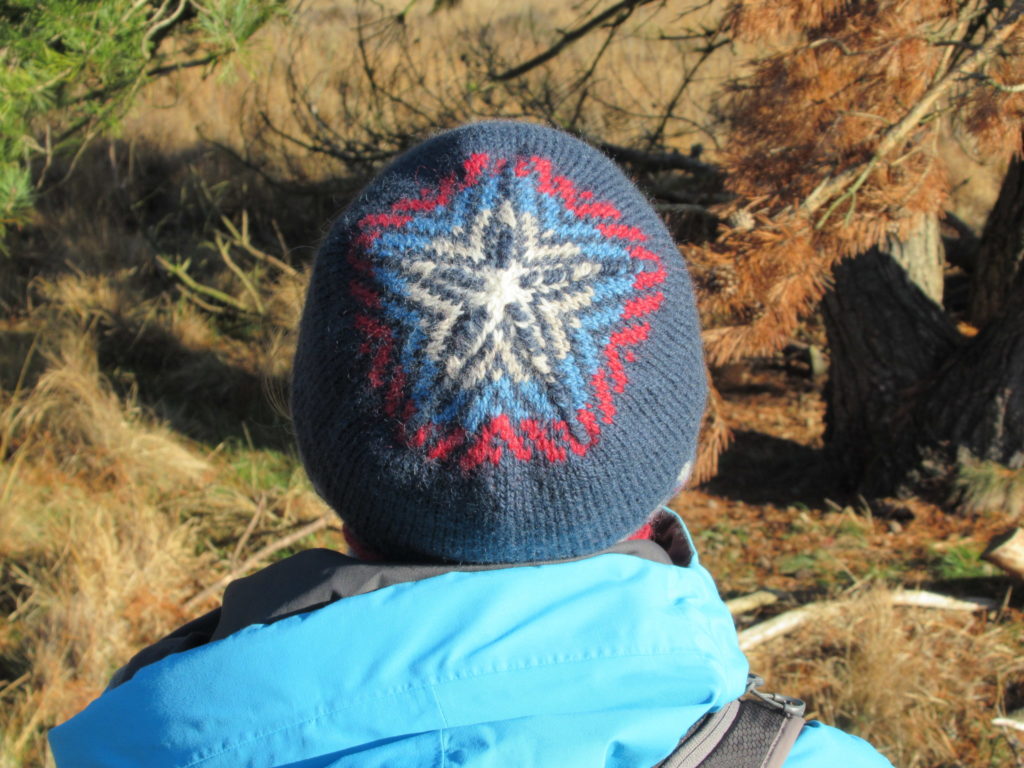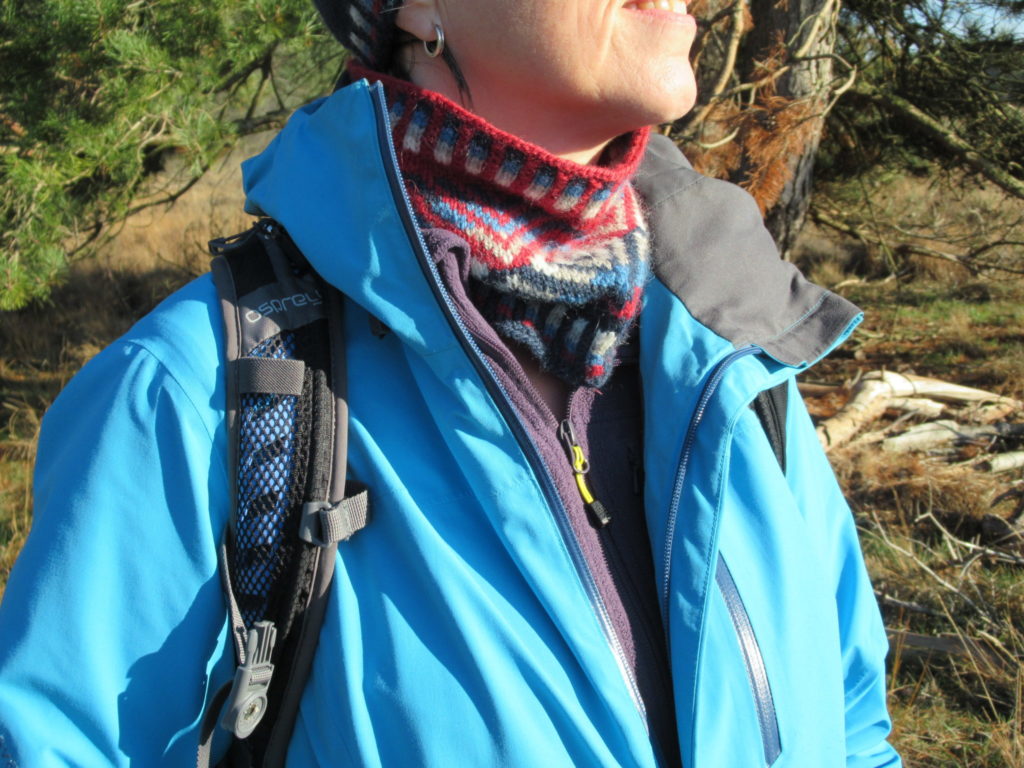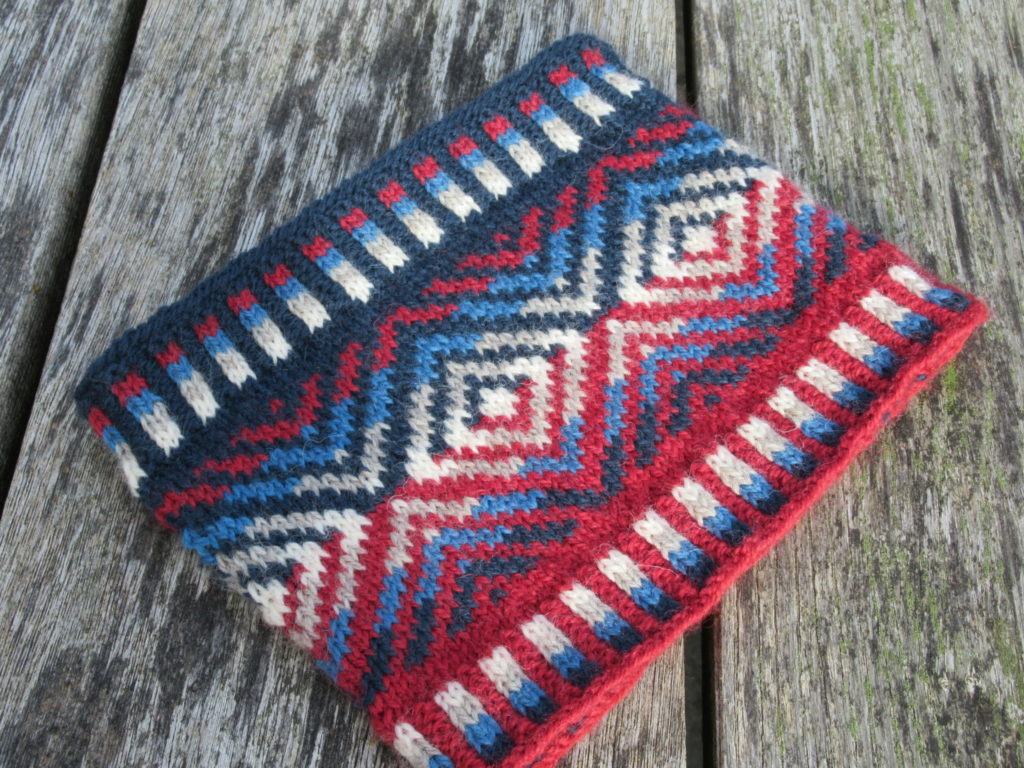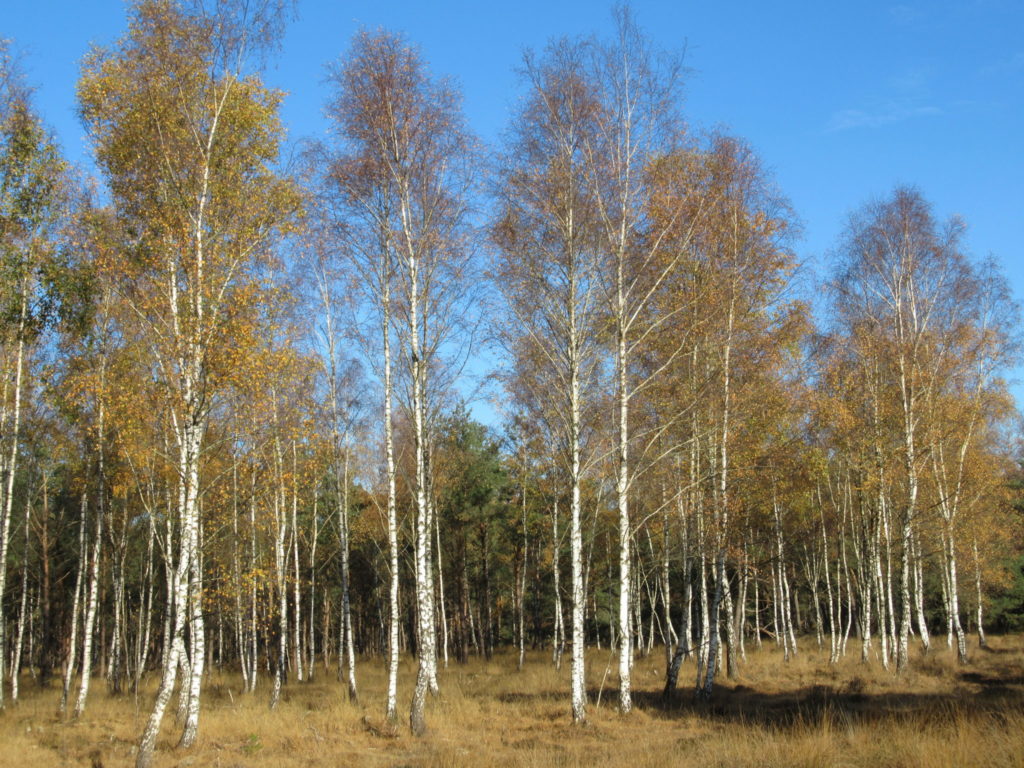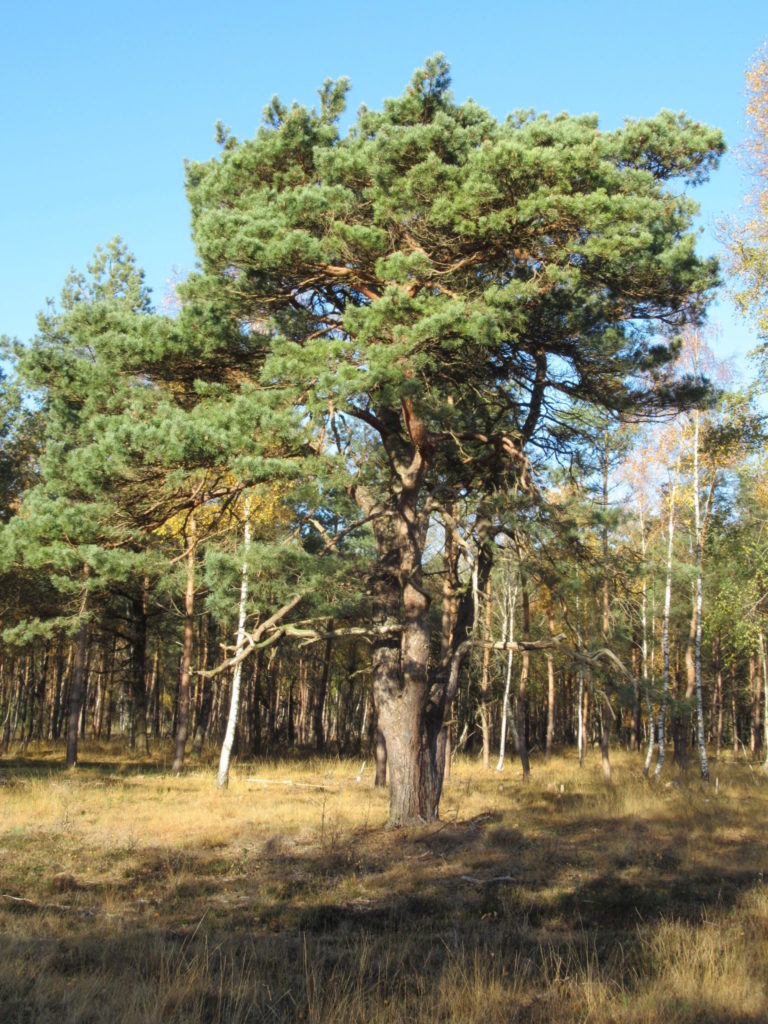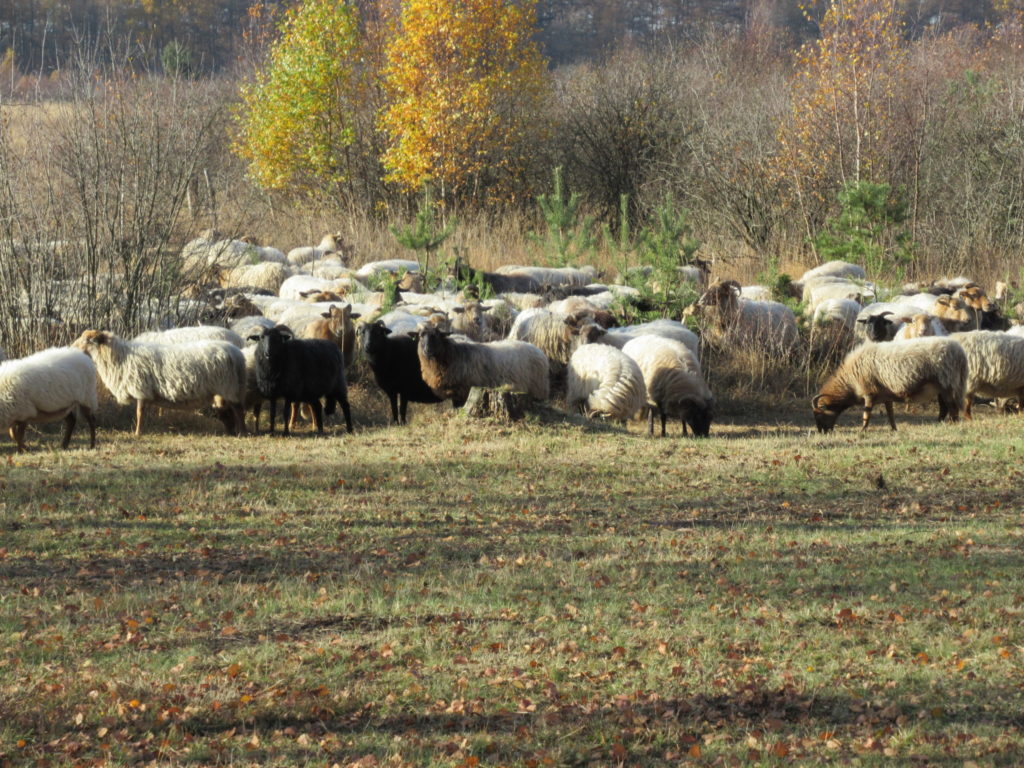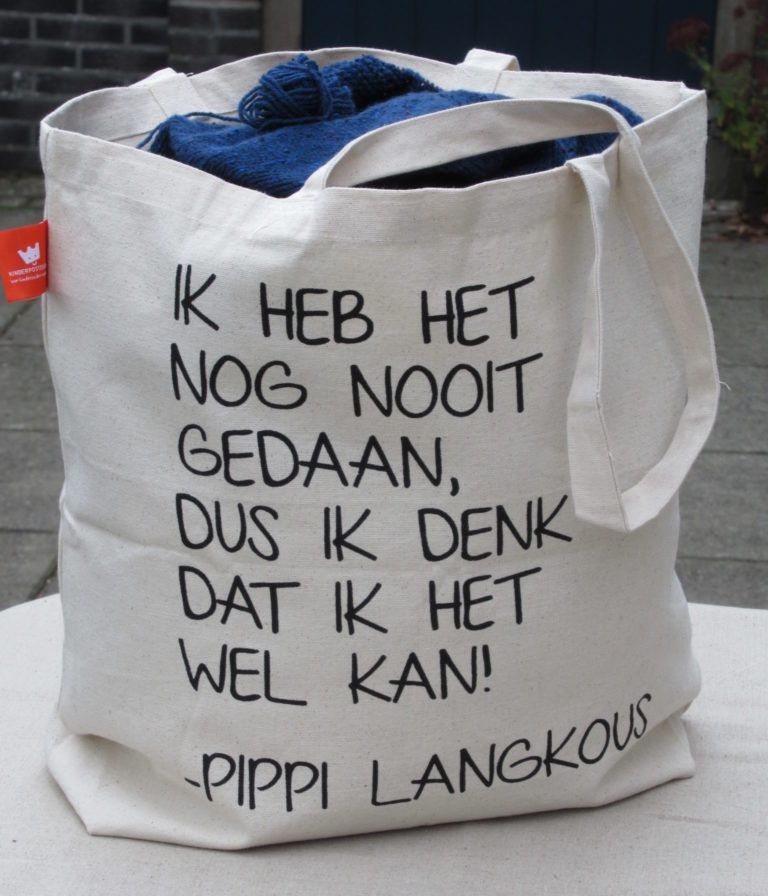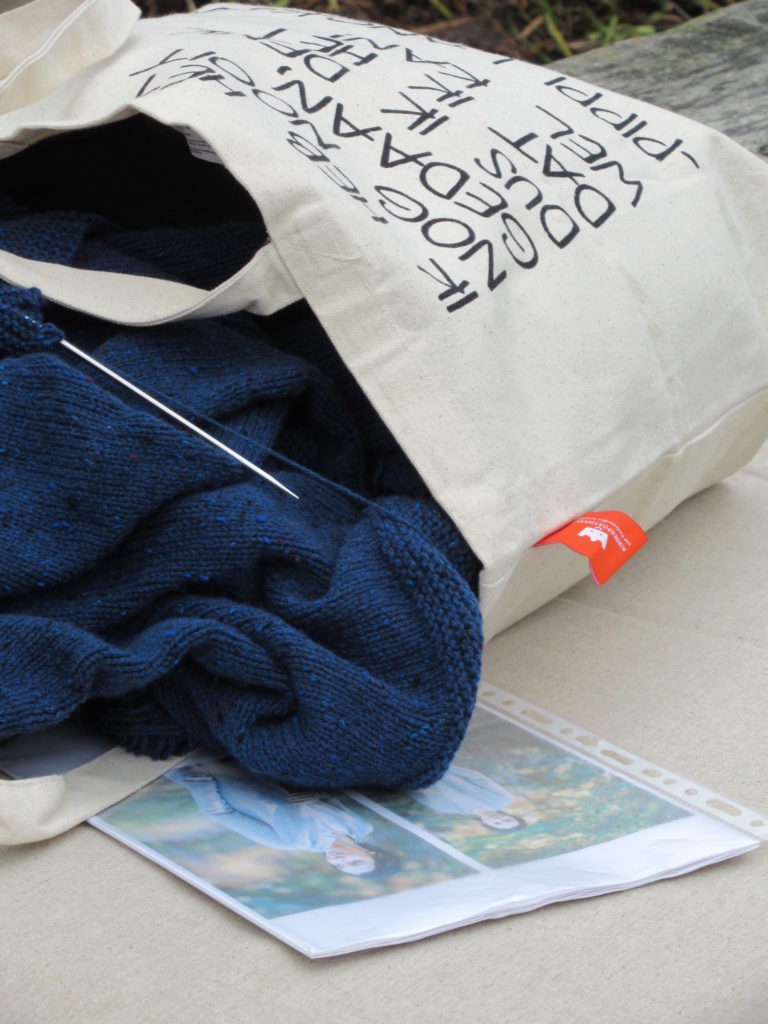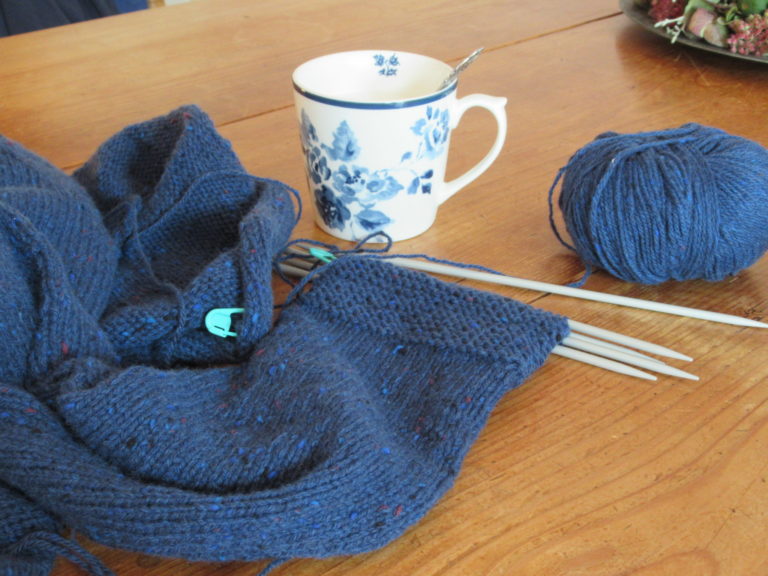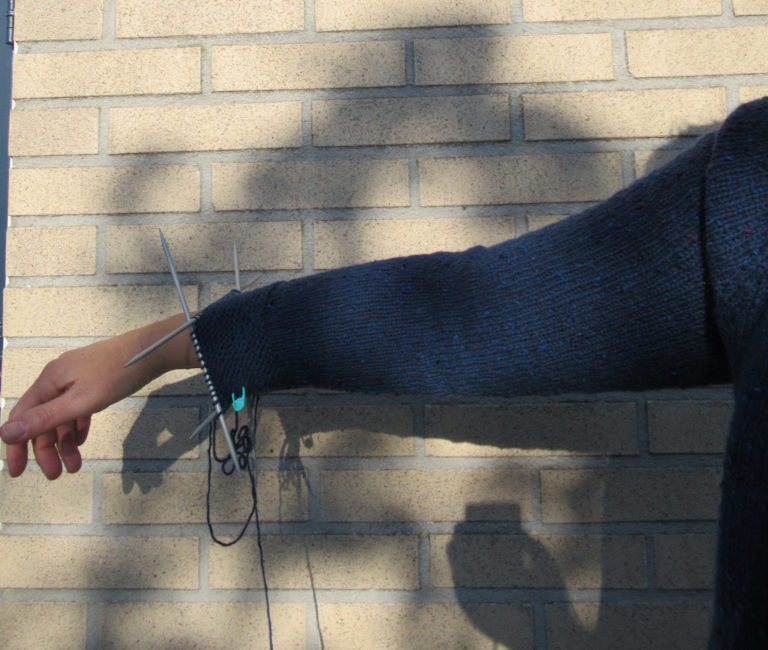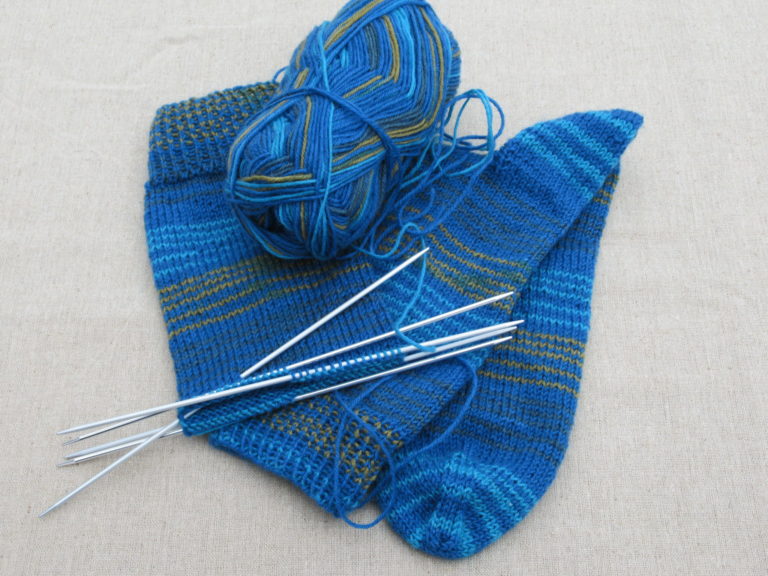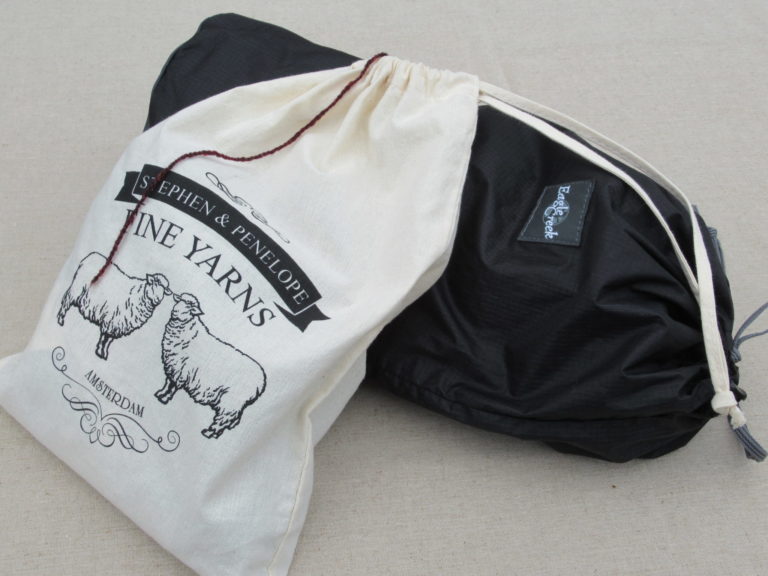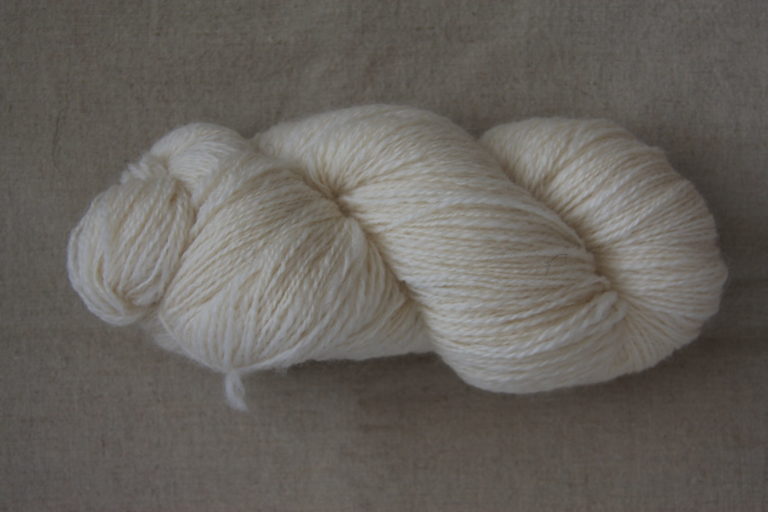Right now, life around us looks a bit like relay race. As soon as one person recovers from the flu the next one takes over the baton, and starts coughing and feeling headachy. And then the next one. For those of you who are reading this with watery eyes and a box of tissues close to hand: I wish you a speedy recovery!
I’m more or less back to normal, so I thought I’d give you the knitting update that I promised last week. It’s all about simple knits right now, nothing spectacular (is knitting ever spectacular?). I’m glad that I have several things in this category on my needles.
Granite
First of all there is ‘Granite’, the cardigan that I’m making for our daughter. Although I don’t feel like I’m spending huge amounts of time knitting, it is progressing much faster than I’d expected. I’d hoped to have it finished before the autumn, but if it goes on like this, she may even be able to wear it later this spring. The back, both fronts and one sleeve are done. There’s just one more sleeve to knit.
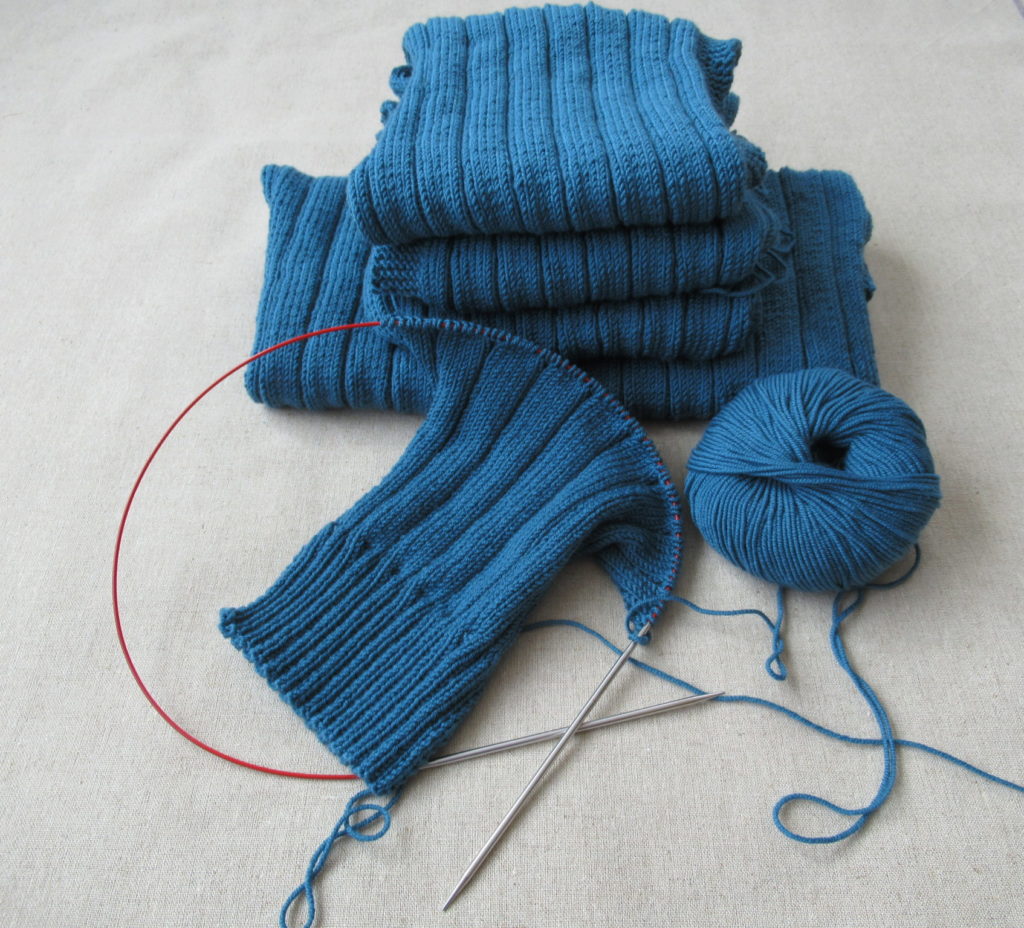
The combination of yarn and stitch pattern make for a really, really elastic fabric. As a consequence all of the pieces look very long and narrow. I mean, look at this sleeve:

Does it look like something that is going to fit? Not really. I trust that it’s going to be all right in the end, because I have knit my swatches and have complete faith in the designer, but still…
Measuring problems
Measuring the length of the pieces is quite hard, as they stretch enormously in every direction. I’ve measured the first sleeve again and again, and the tape measure indicates a different length every time.
I’ve also counted the number of rows I knit and compared them to my swatch. For the sleeve, for instance, I need to knit 40 centimeters from cuff to start of sleeve cap. In theory that is four times the number of rows of my 10 cm swatch. But in reality that looks way shorter than it should be, and that’s what my tape measure tells me too.
Well, I’ve done my best and hope that back and front, and especially the sleeves are going to be the right length.
Button bands
The button bands are knit onto the cardigan and have tiny, one stitch button holes:
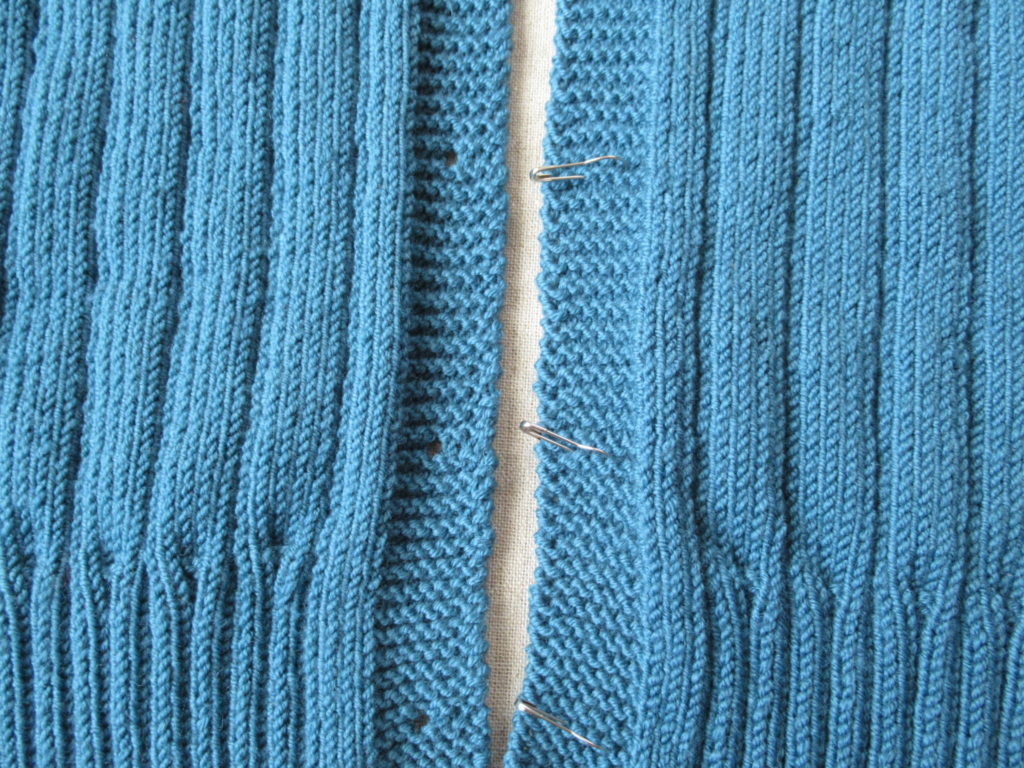
I usually buy the buttons first and then adapt the button holes to them. But because I was unable to go out, I’m doing it the other way round this time. I’m knitting the buttonholes as indicated in the pattern and hope that I’ll be able to find matching buttons.
(While I was taking these pictures, there were some heavy rain showers, with sunny spells in between. The sun suddenly came out when I took the buttonhole picture, which is why it looks such a different colour. On my screen, the picture of the sleeve is truest to the actual yarn colour.)
Socks
The second project on my needles is a pair of socks. Not terribly exciting, but always nice to do. Usually I don’t mind if the two socks end up slightly different. I think it’s no problem at all in the pair below that I knit a while ago. As you can see, the sock on the right has a darker cuff and toe, and a bright pink heel, while the colours are distributed differently in the sock on the left. But overall, the effect is similar:
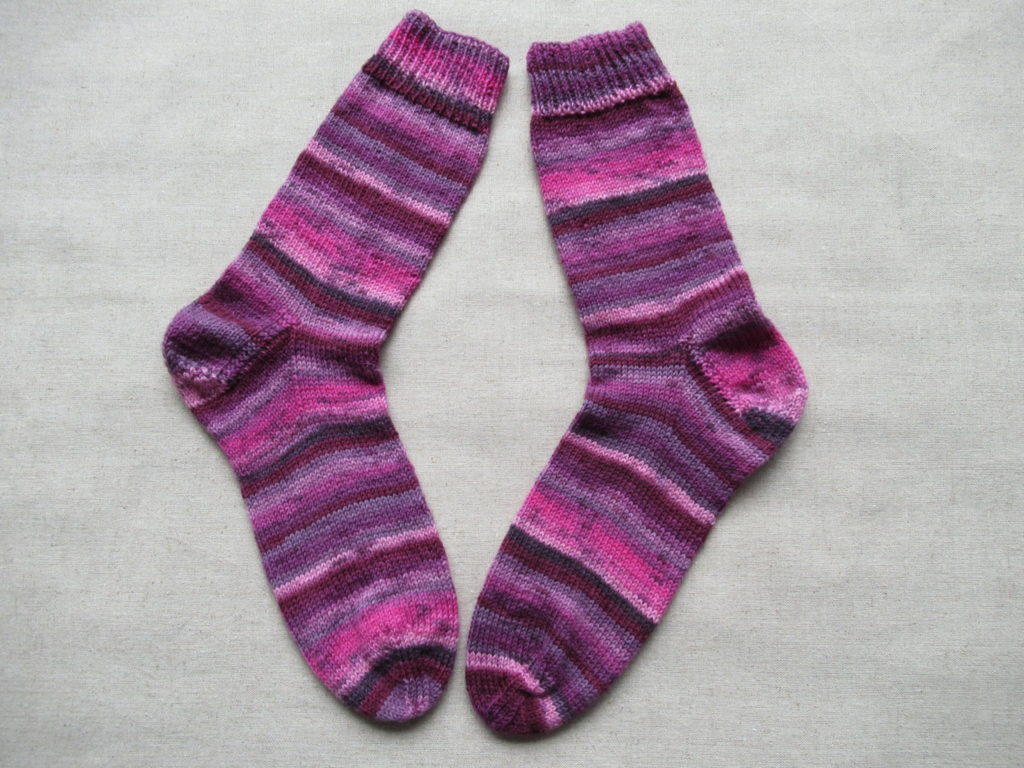
But the pair I’m knitting now has very prominent stripes:

In this case I do want both socks to be alike. Nowadays some of these yarns have a special starter thread that helps create two identical socks, but my yarn doesn’t. So what I’ve done is I’ve chosen a clearly recognizable part in the stripe pattern (the narrow blue stripe bordering the part with the turquoise in the middle) and started with that. I hope I can replicate that on the second sock.
Take-along project
I have a confession to make. My scarf in four colours of mohair and silk was meant to be my take-along project. The idea was that I would knit the memories of places I’d been to into it. But I’ve cheated and also knit a bit at home. I wasn’t going anywhere for weeks on end, and I just couldn’t keep my hands off it.
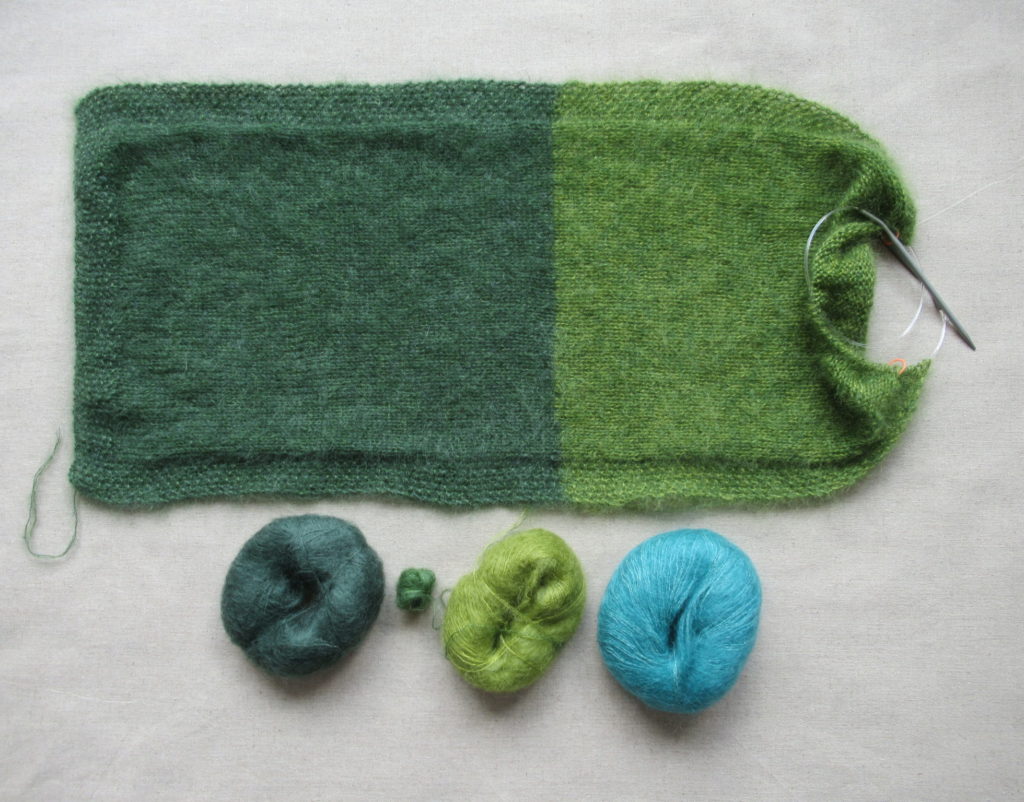
Apart from that, it has accompanied me on an outing with our daughter, a visit to friends in the south of the country and to my knitting group on Wednesday, where I added in the next colour, the bright turquoise on the right (I took the photo beforehand).
In this scarf, two colours are knit together in every ‘block’. This means that the scarf as a whole will be less bright than the yarn on the ball, and that the colours blend nicely together from one block to the next.
Swatches
And last but not least, I’ve been knitting some swatches in an absolutely BEAU-TI-FUL yarn.
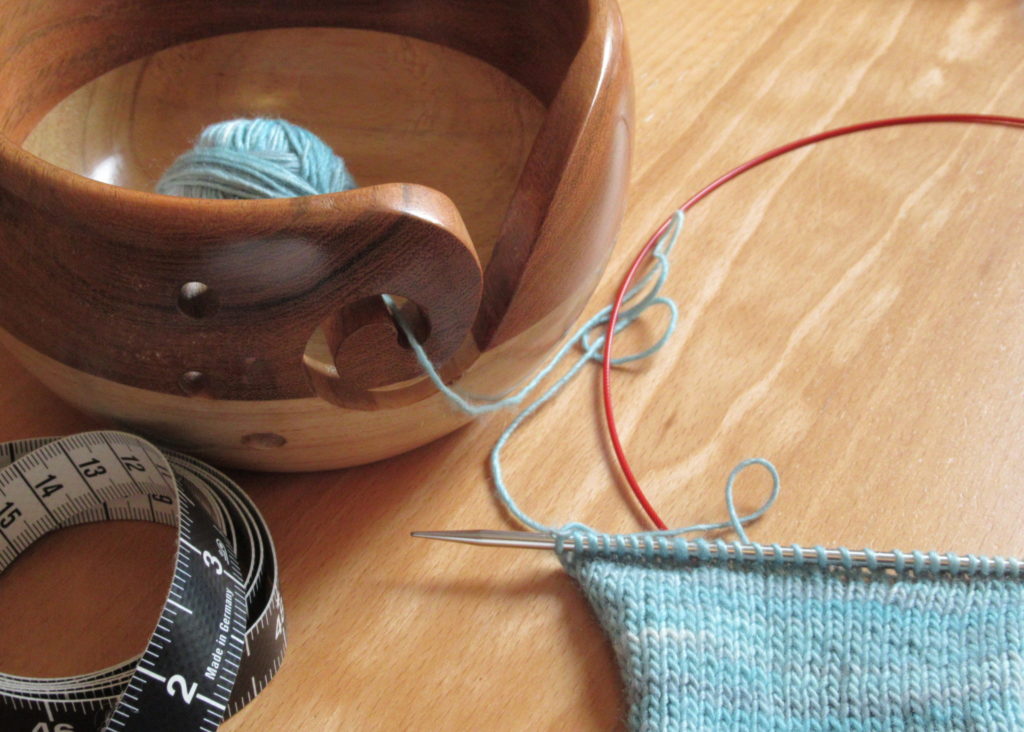
This fairly thin yarn is soft, has a slight gleam and comes in a range of lovely colours. I hope to tell you more about it soon.
